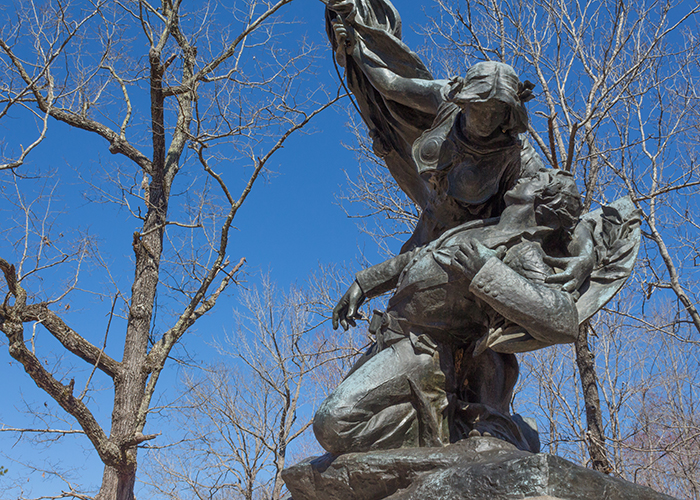 More 2022 Adventures |
Nashville, TN → Shiloh, TN → Birmingham, AL → Nashville, TN 490.0 mi (788.6 km) |
 Next Day |
When they go shi, I go loh, everyone!
2022 is turning out to be a break-neck adventure year, and I am closing in on my 200th national park site! That’ll come later, but today, I’m in the Volunteer State of Tennessee! I flew in last night, and my goal over the next four days is to visit six national park sites in Tennessee and Kentucky, starting with yet another Civil War battlefield: Shiloh National Military Park! Here, the Union scored a major victory in the Mississippi Valley!
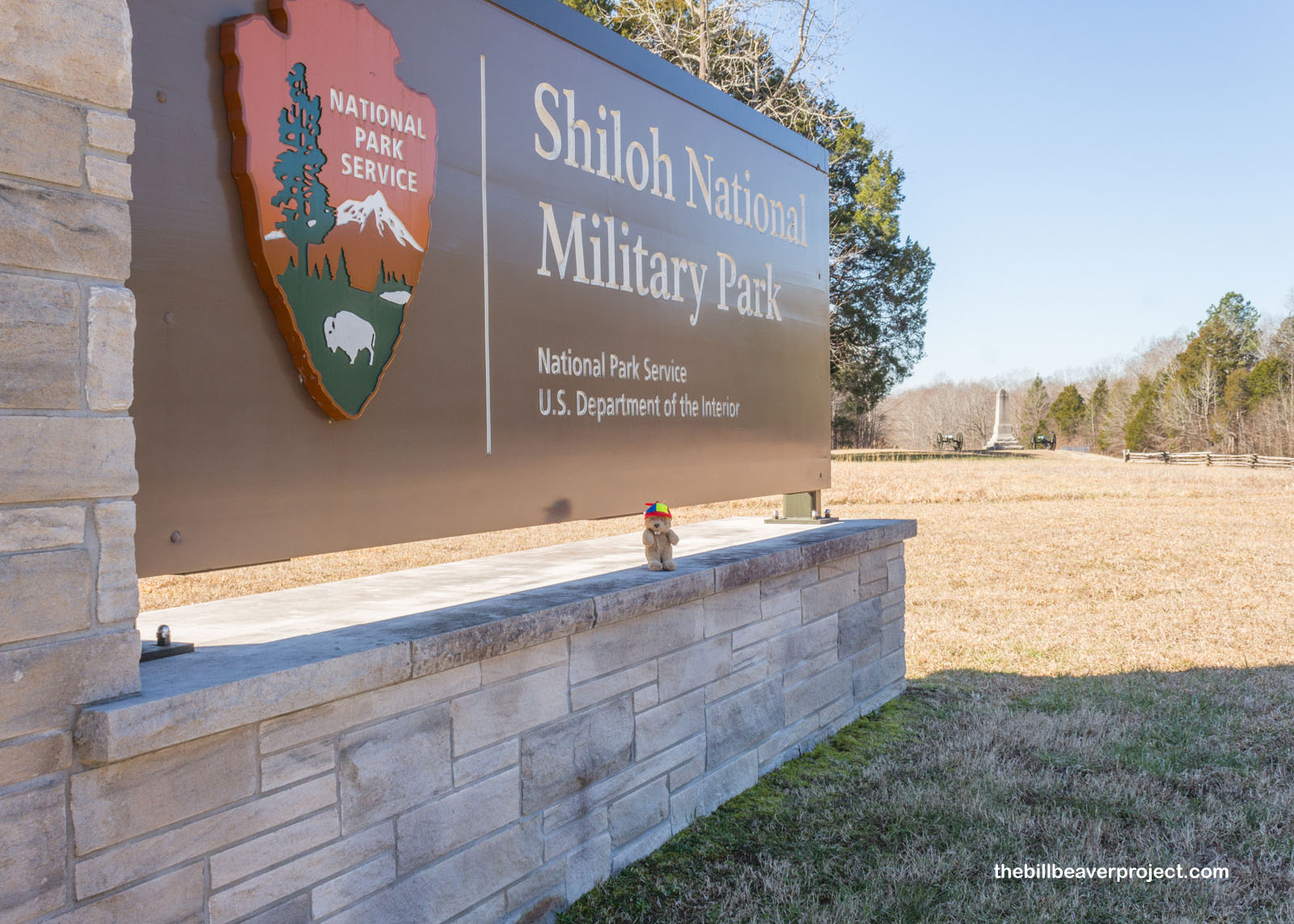 |
This military park took great care to color-code the positions of every military force who fought at Shiloh on April 6th and 7th, 1862: blue for Army of the Tennessee, red for the Army of the Mississippi, and yellow for the Army of the Ohio! It could take days to visit all of them, but I planned to at least see some of them!
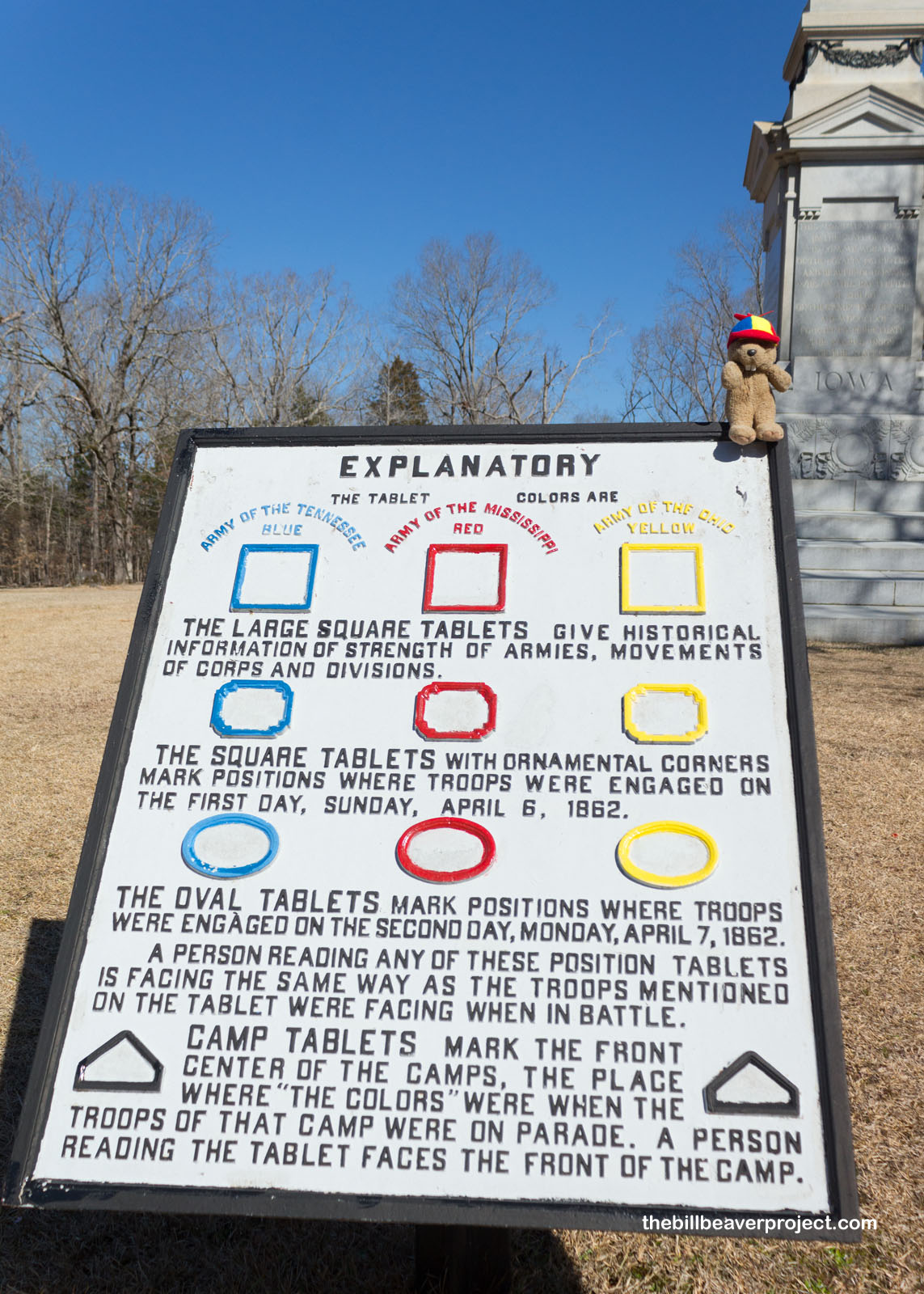 |
Right away, some glorious monuments greeted me at the entrance, like the monument to the 51st Regiment of the Indiana infantry, commanded by Colonel Abel Streight! They were part of the Army of the Ohio, marked by yellow. Then there was the towering granite monument to soldiers from Iowa, designed by Fritz Trieble to honor the 2,409 Iowans who fell on the battlefield at Shiloh. The lady with the pen is the personification of Fame, writing their praises in stone!
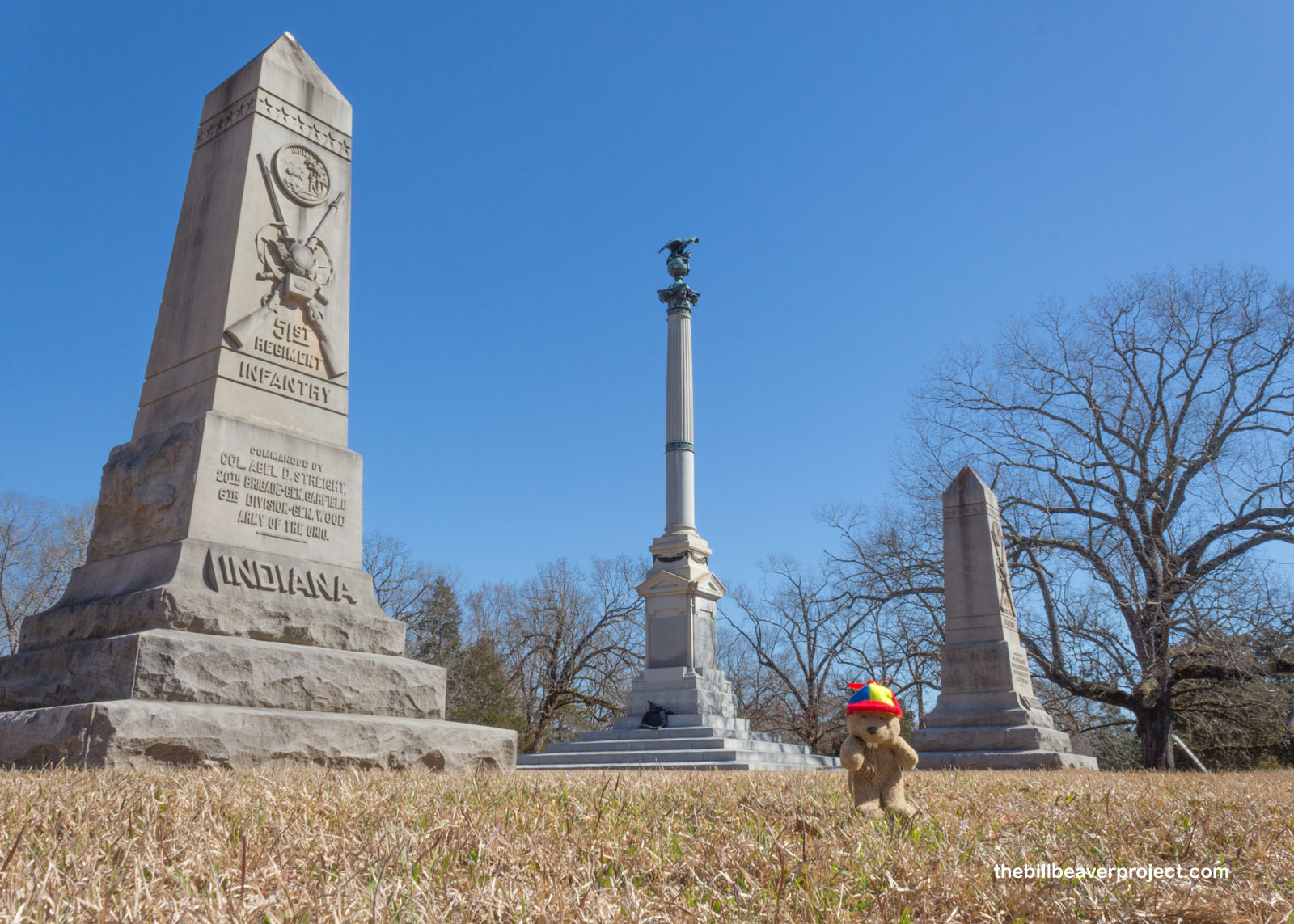 |
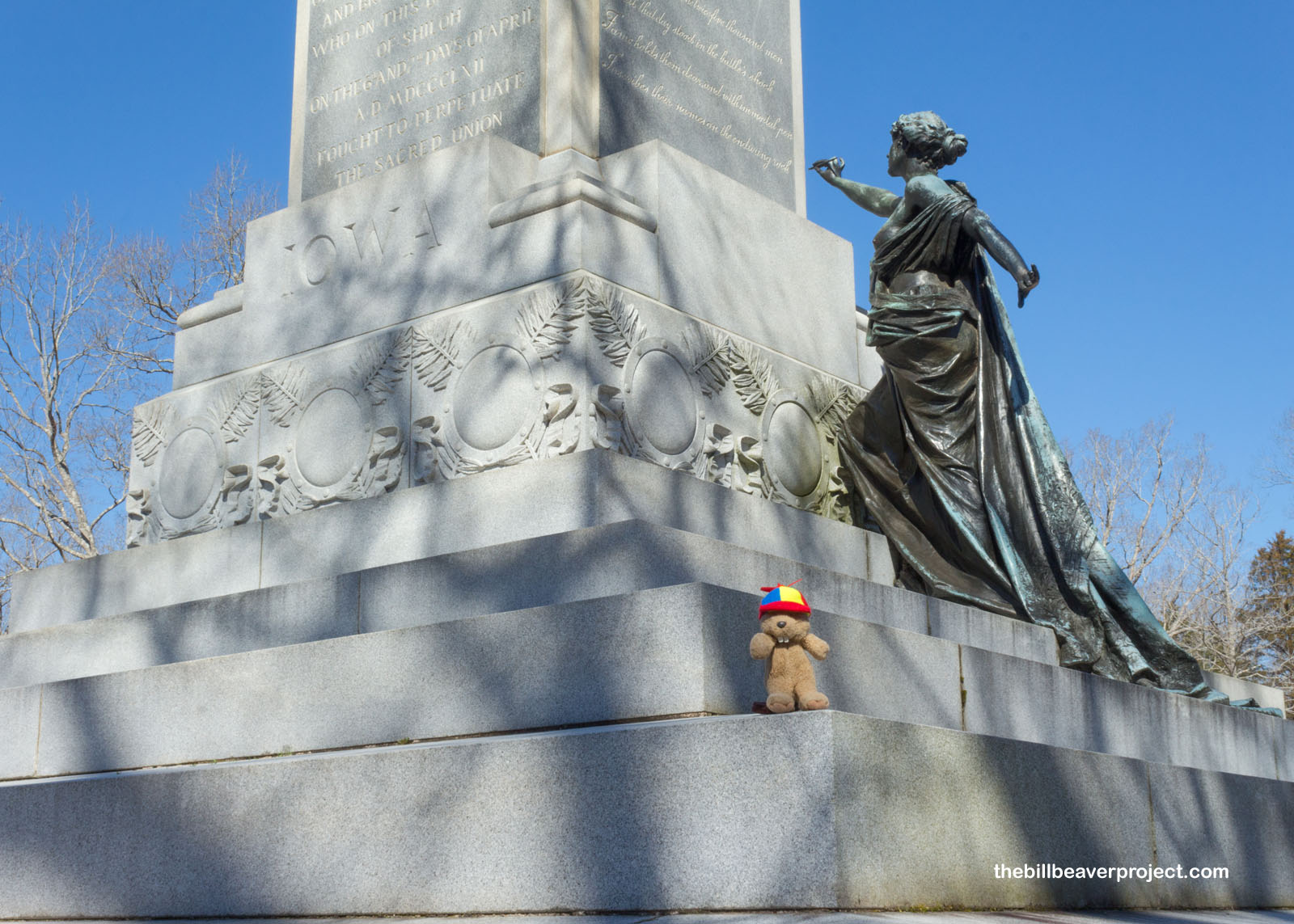 |
There are also plenty of Confederate memorials on this battlefield, which is where they belong, in my opinion! This one, called Defeated Victory was sponsored by the United Daughters of the Confederacy and symbolically depicts the Confederate victory of April 6th that slipped away overnight on April 7th, as well as the death of General Albert Johnston on the battlefield!
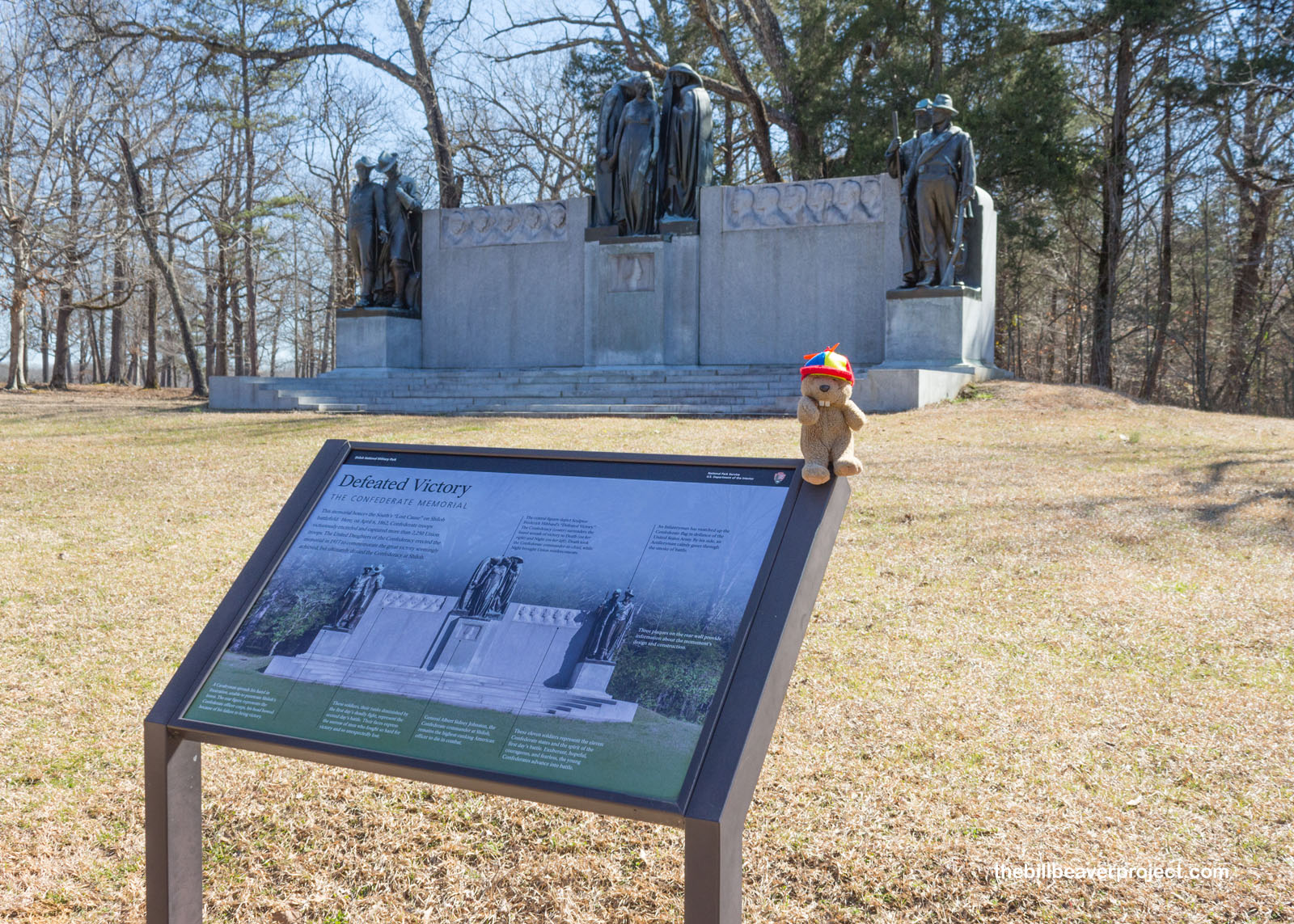 |
So what exactly happened here at Shiloh? Well, I’m going to shuffle some photos a bit for chronology’s sake! (The tour route isn’t exactly in order of events.) The Union Army, having taken control of Nashville and the state of Kentucky, set their sights on breaking up Confederate railroads. There was a crucial junction in Corinth, Mississippi, about 22 miles south of here, but the closest that General Grant’s troops could get was this spot on the Tennessee River called Pittsburg Landing!
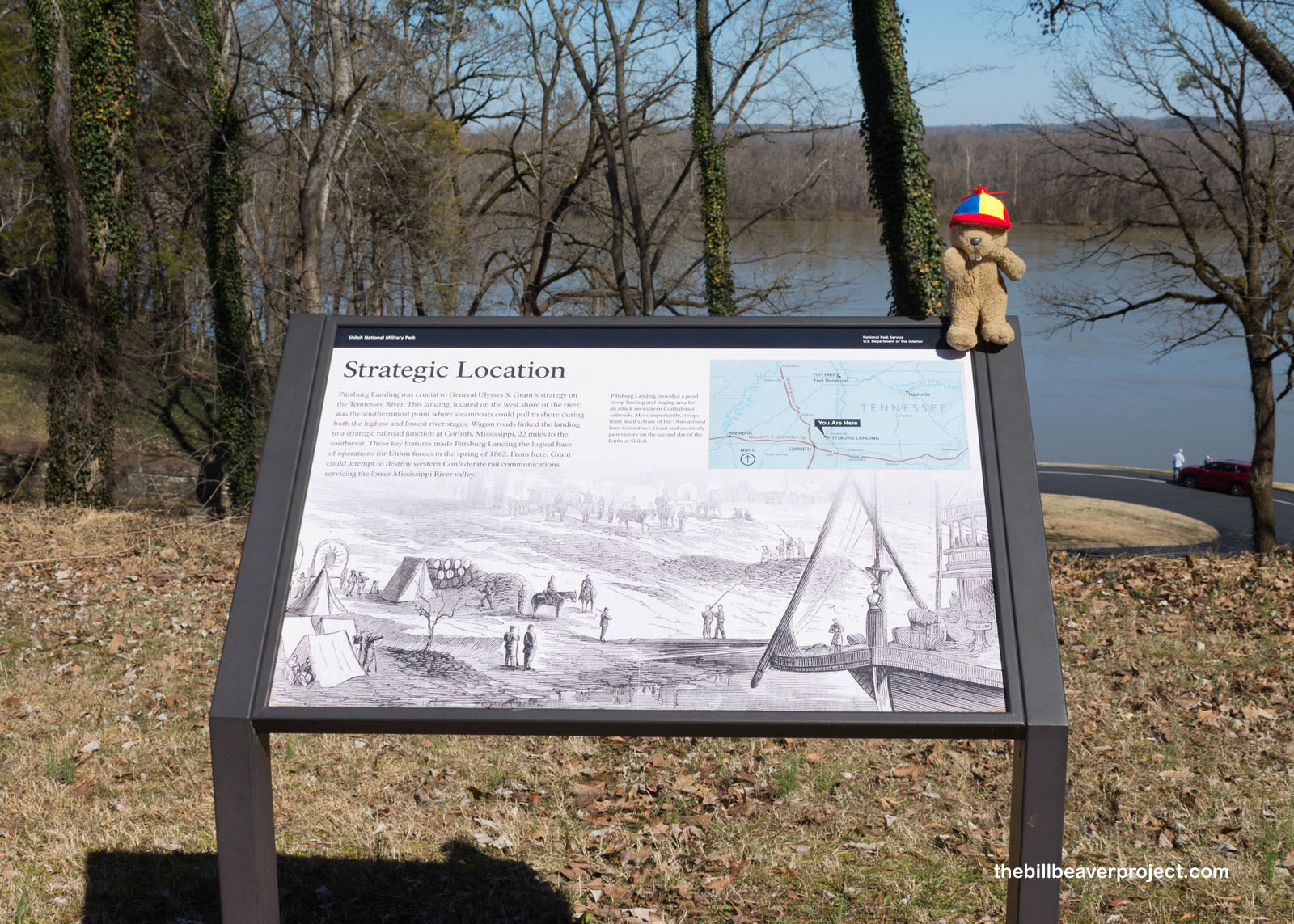 |
Thinking they had taken General Johnston’s troops completely by surprise, the Union got bamboozled themselves! While they waited for General Don Carlos Buell to arrive with reinforcements, Colonel Everett Peabody got suspicious and sent out a patrol in the early morning hours. They encountered Confederate pickets ready to defend the road to Corinth, and the battle of Shiloh was ready to begin!
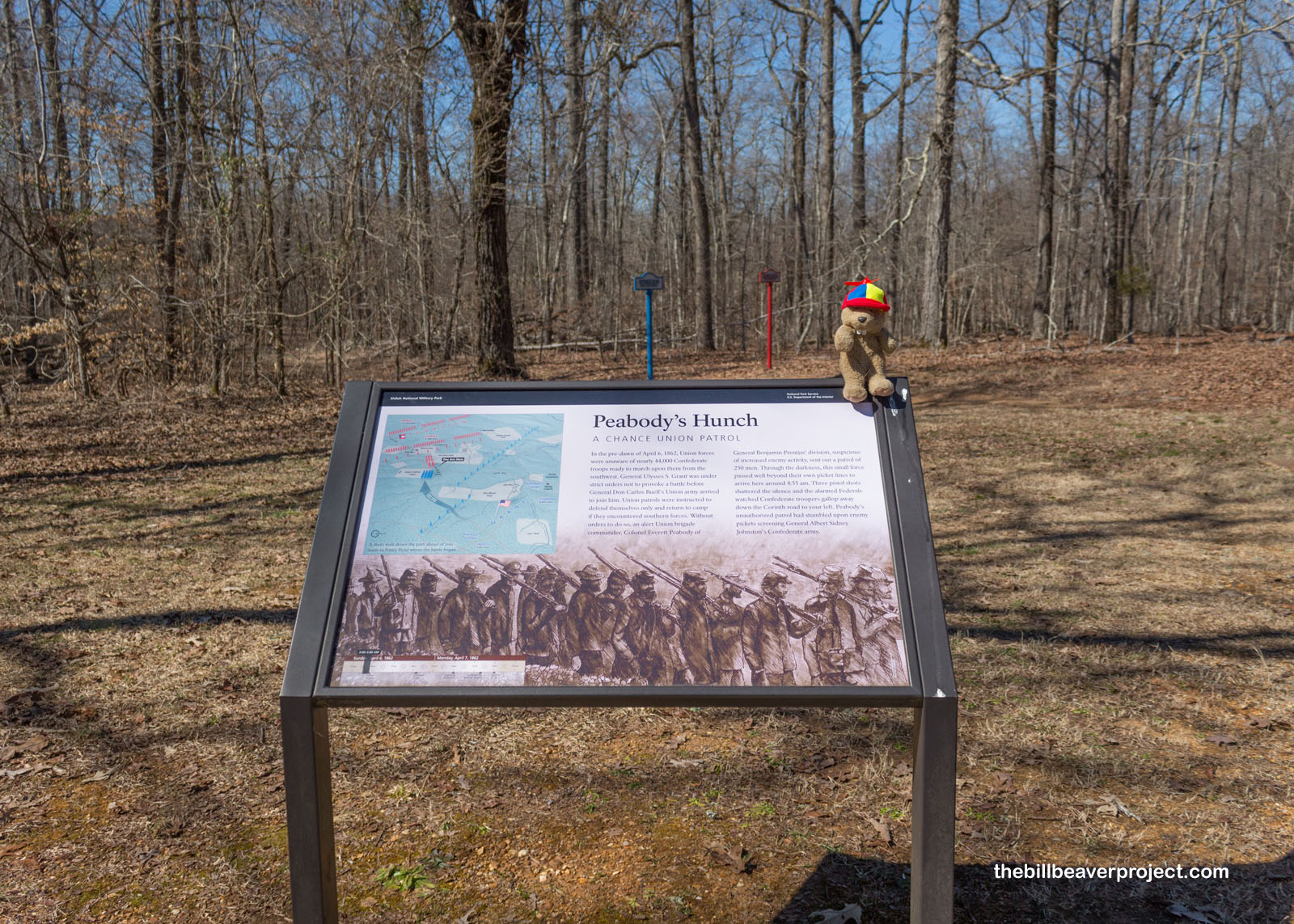 |
Union and Confederate Forces first clashed at this tiny log church called Shiloh Meeting House. Ironically, the name of the church that would get stuck to this bloody battlefield means “house of peace!” Fighting here was so fierce that the original church was obliterated! This replica dates back to 1999 using logs dating to roughly the Civil War period. This bloody battle forced the Union troops back to Pittsburg Landing, and the church would serve as a shelter for those who were wounded or dying!
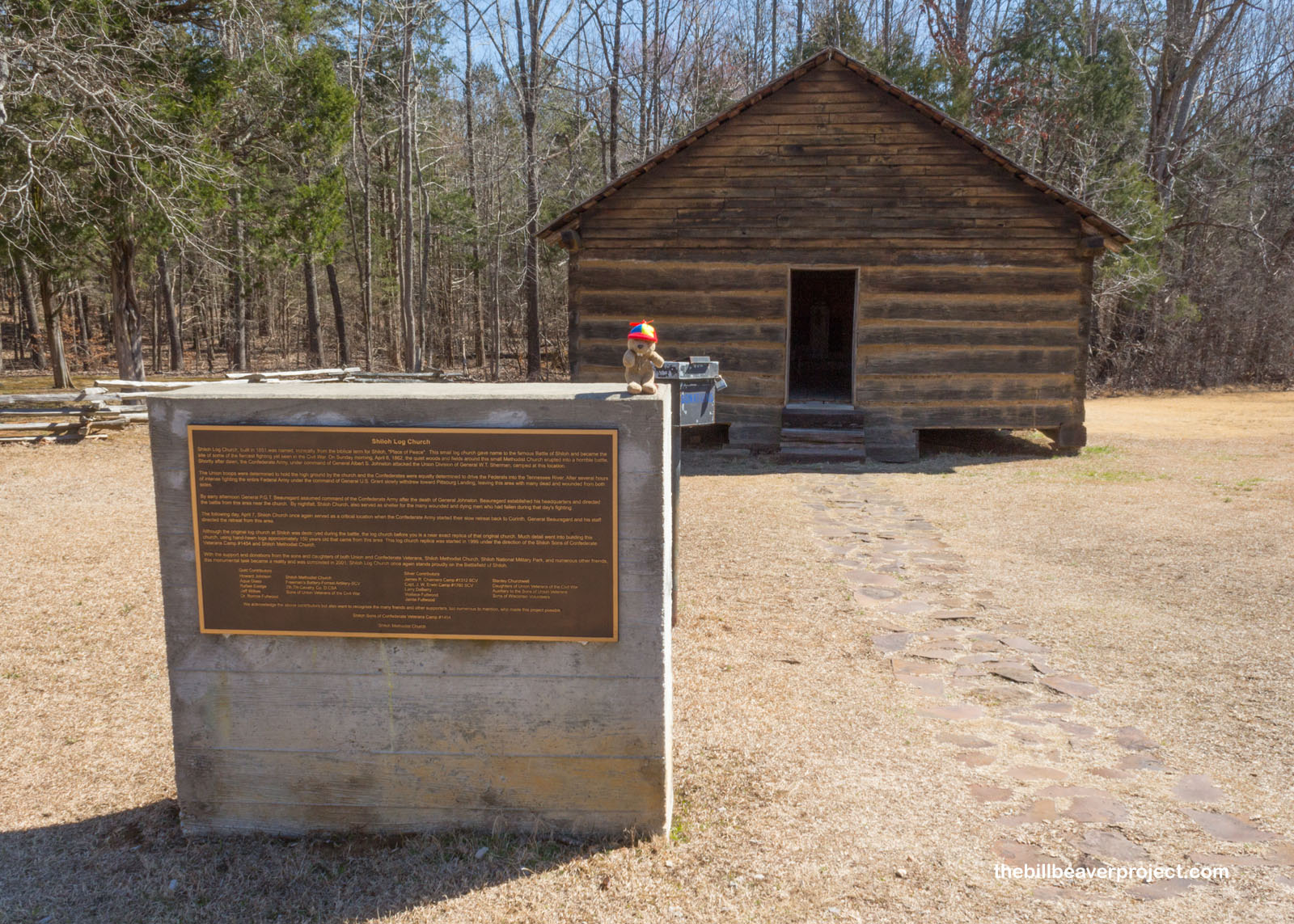 |
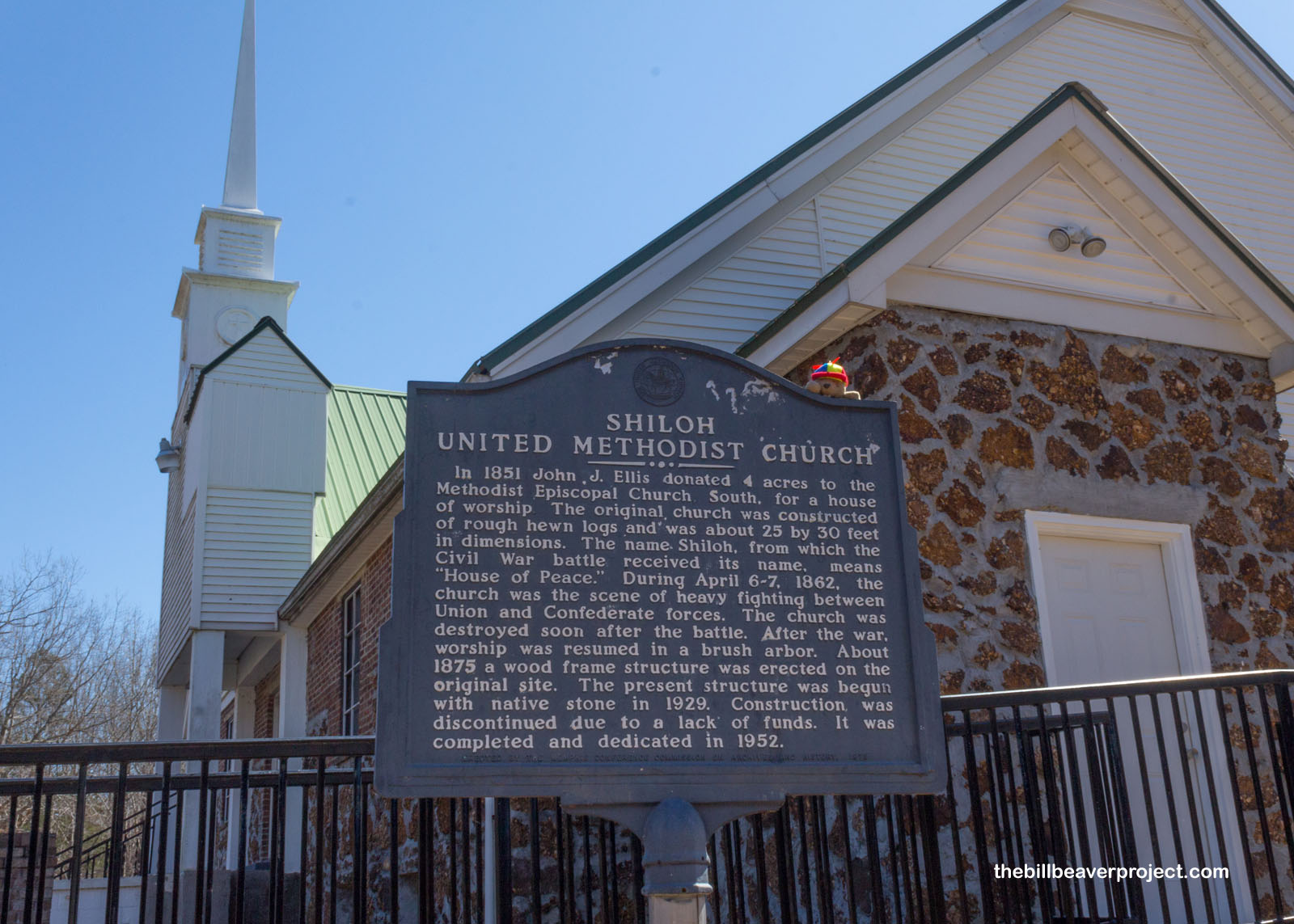 |
Once fighting broke out, it was a steady push against the Union forces from 4:55 AM until 6:00 PM! While bubbling Rhea Spring sure is peaceful today, this was a ferocious fighting spot in the initial battle around Shiloh Church!
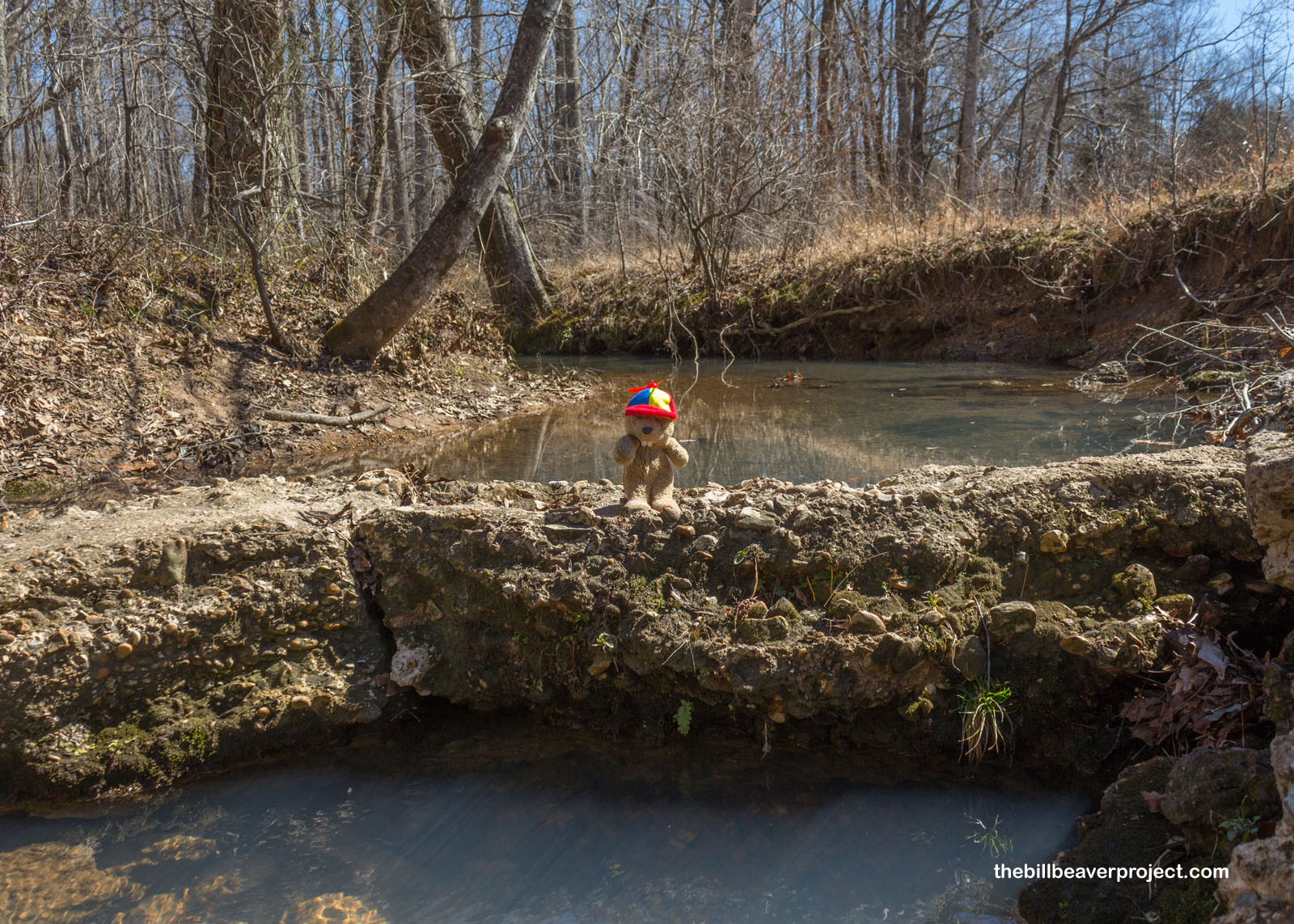 |
In fact, the 6th Mississippi Infantry had 70% casualties at this spot! Not far behind this monument, there is a mass grave for those Confederate soldiers who died here!
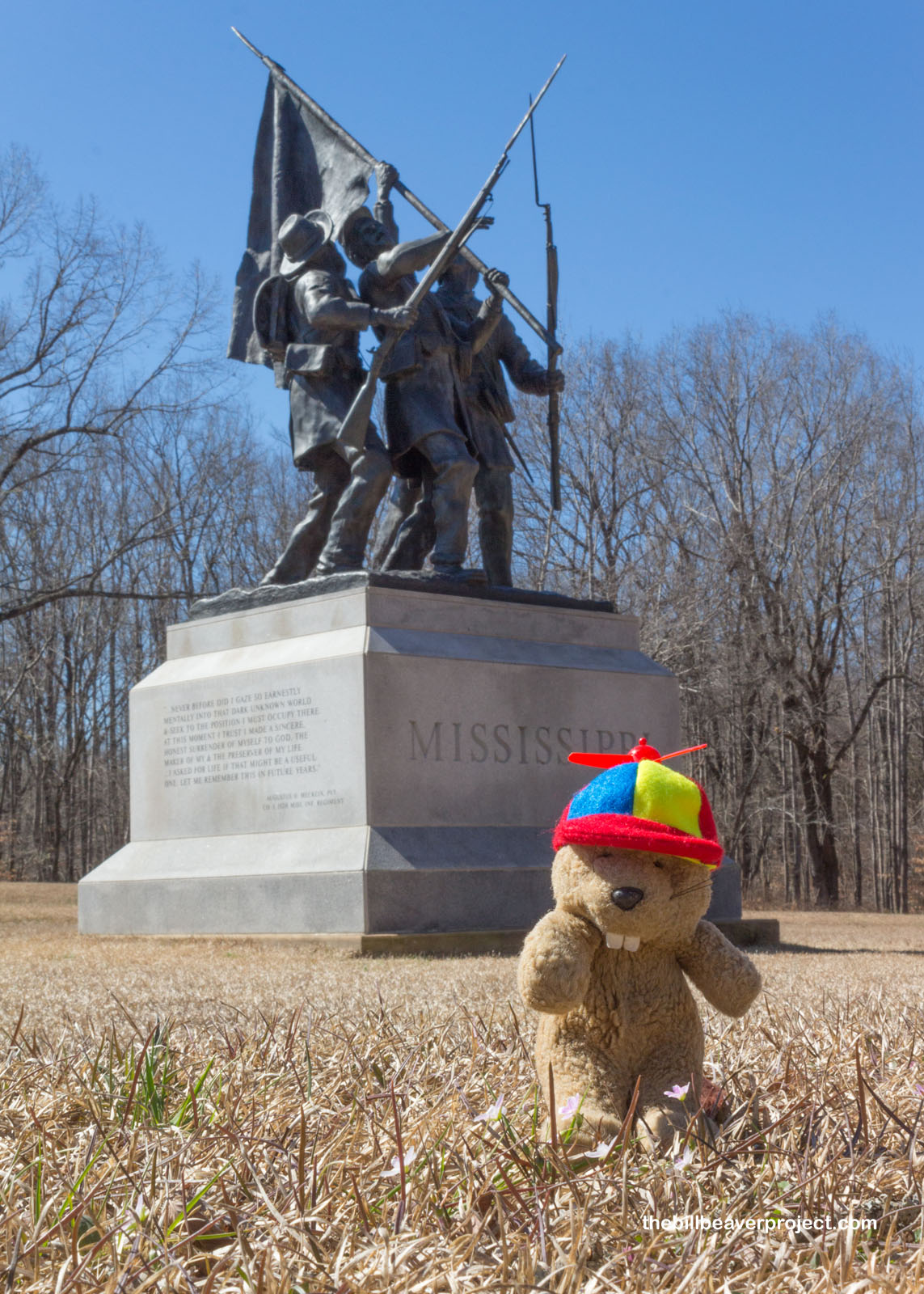 |
But some of the most ferocious fighting took place at this spot, called the Hornets Nest! Defended by three divisions of the blue Army of the Tennessee, this was one of the spots that the Union was able to hold during their disastrous first day of battle. That’s because it was heavily wounded and the Confederates tried to attack on foot. While trying to do so, they got stung again and again by Union cannons and rifle fire, which earned this spot its nickname!
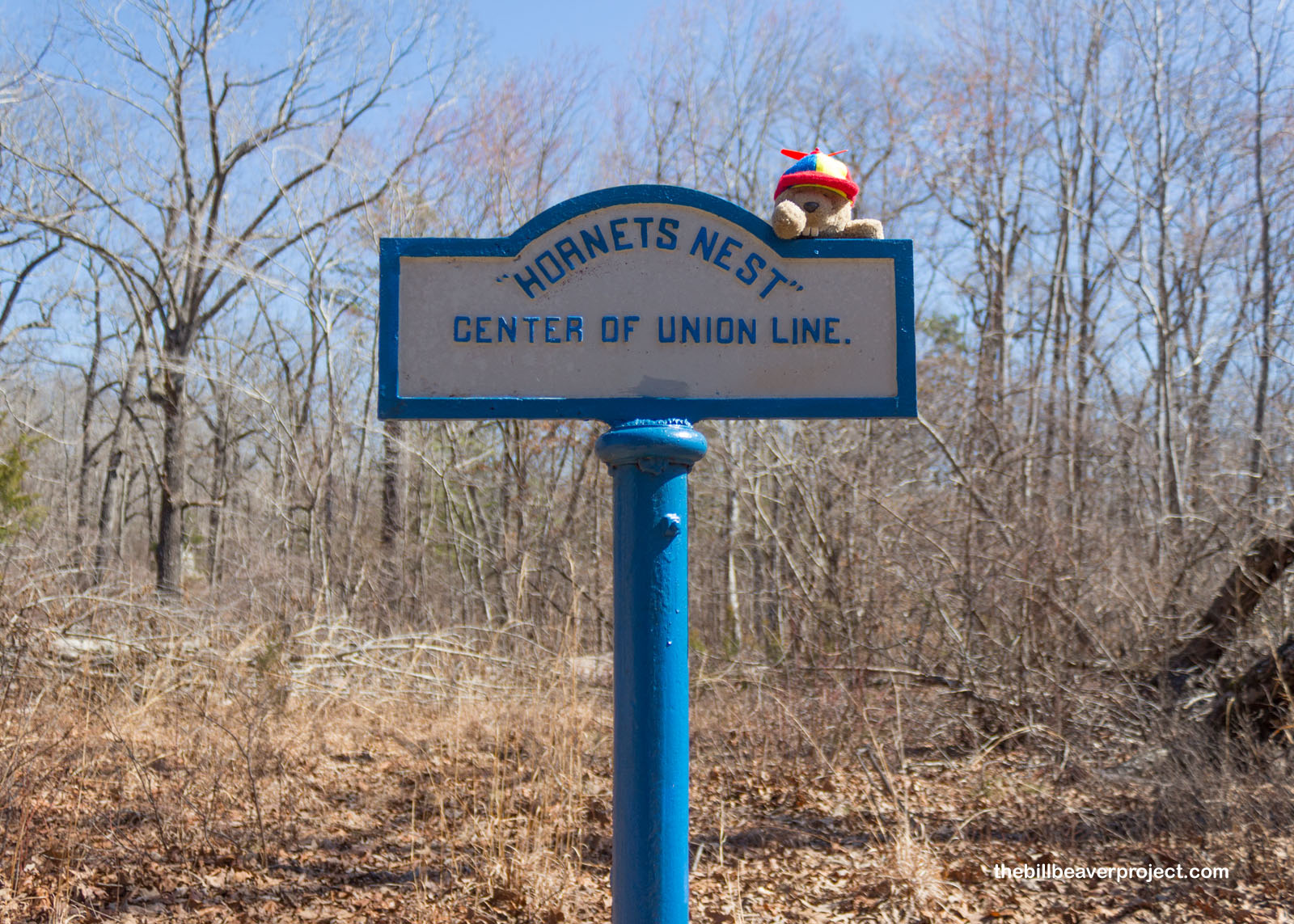 |
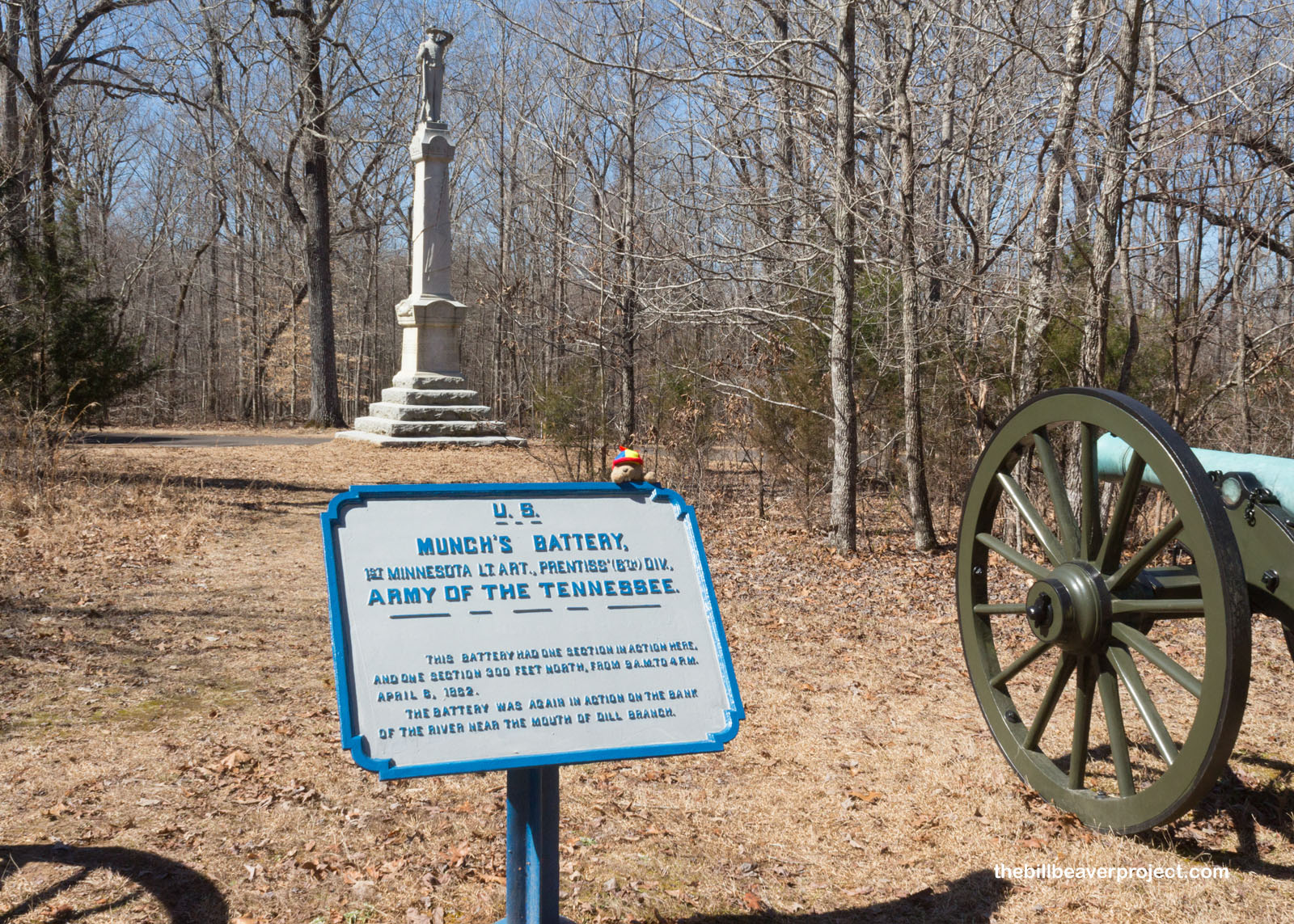 |
However, this defense was not to last, and when infantry failed, it was time to bring in the firepower. Brigadier General Daniel Ruggles’ Battery bombarded the Hornets Nest with 11 batteries (53-62 cannons) for almost an hour! This caused some of the Union troops to retreat, while about 2,250 were trapped and had to surrender, including Generals Benjamin Prentiss and William Wallace!
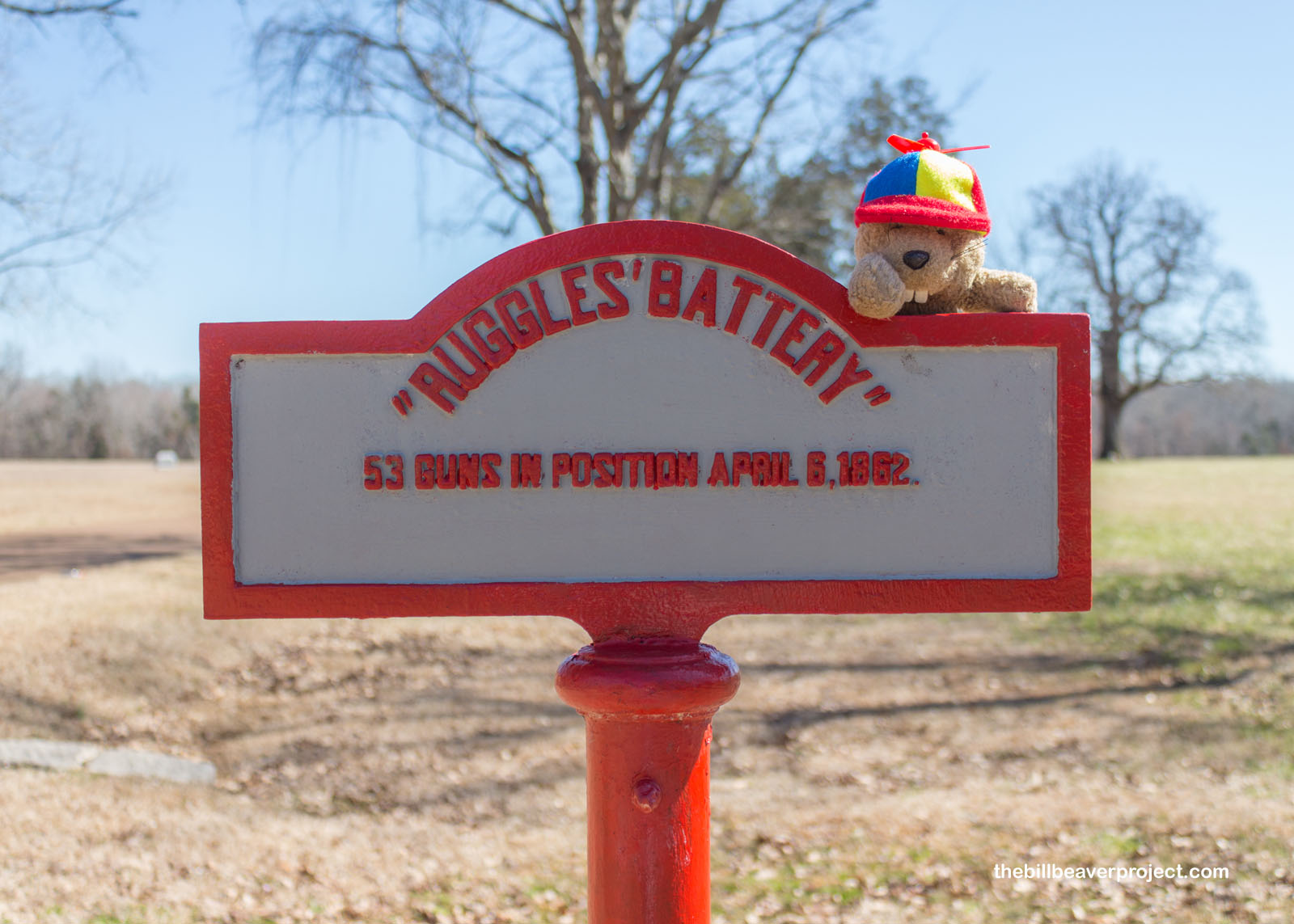 |
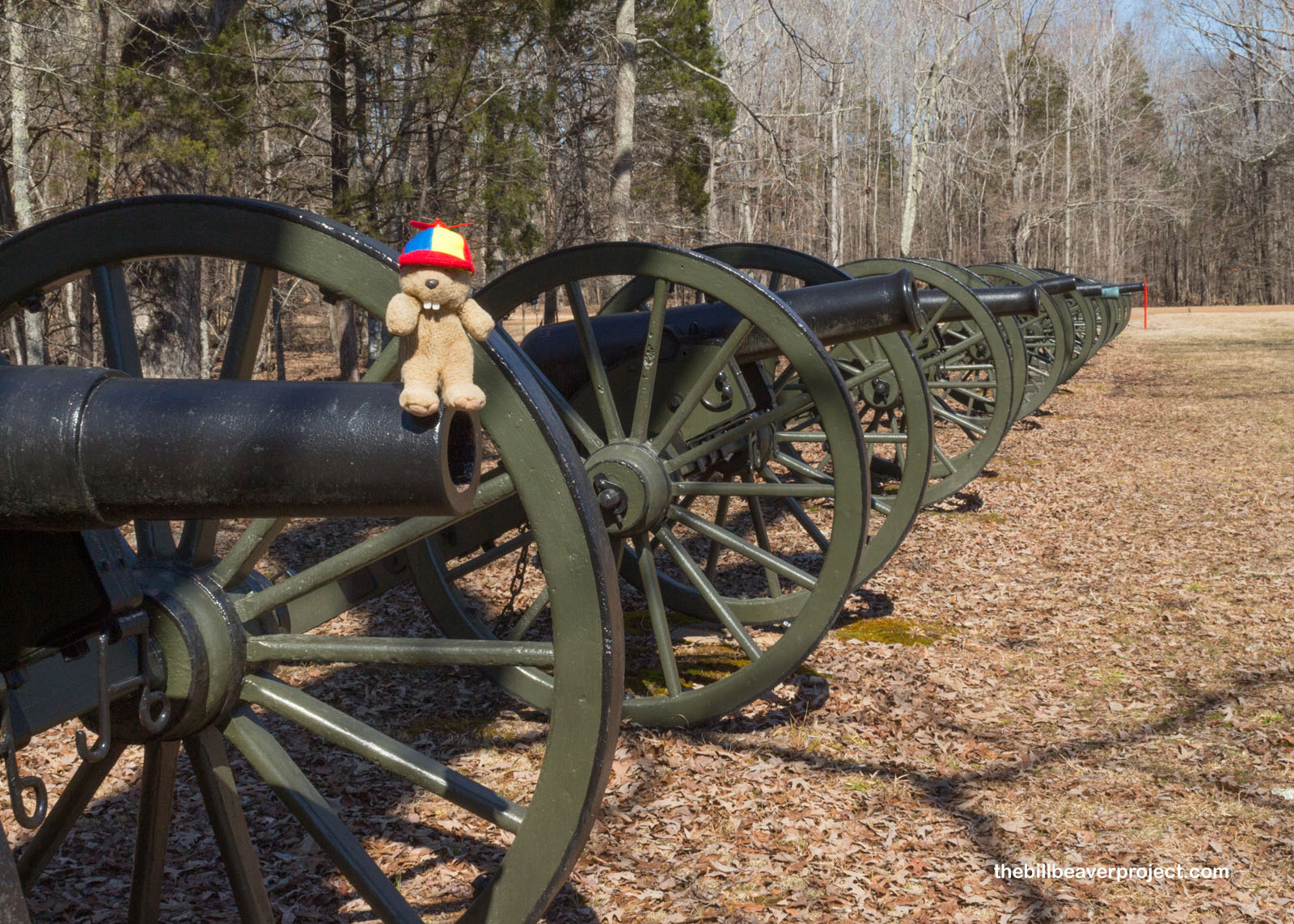 |
From there, a lot of important things happened to the southeast of the Hornets Nest! One of the war’s first tent hospitals arose here, run by Dr. Bernard Irwin! His 300-patient field hospital used confiscated supplies from the Union camp to run triage treatment of wounded soldiers, rather than try to haul them off to a safer location, which addressed wounds more quickly and saved more lives!
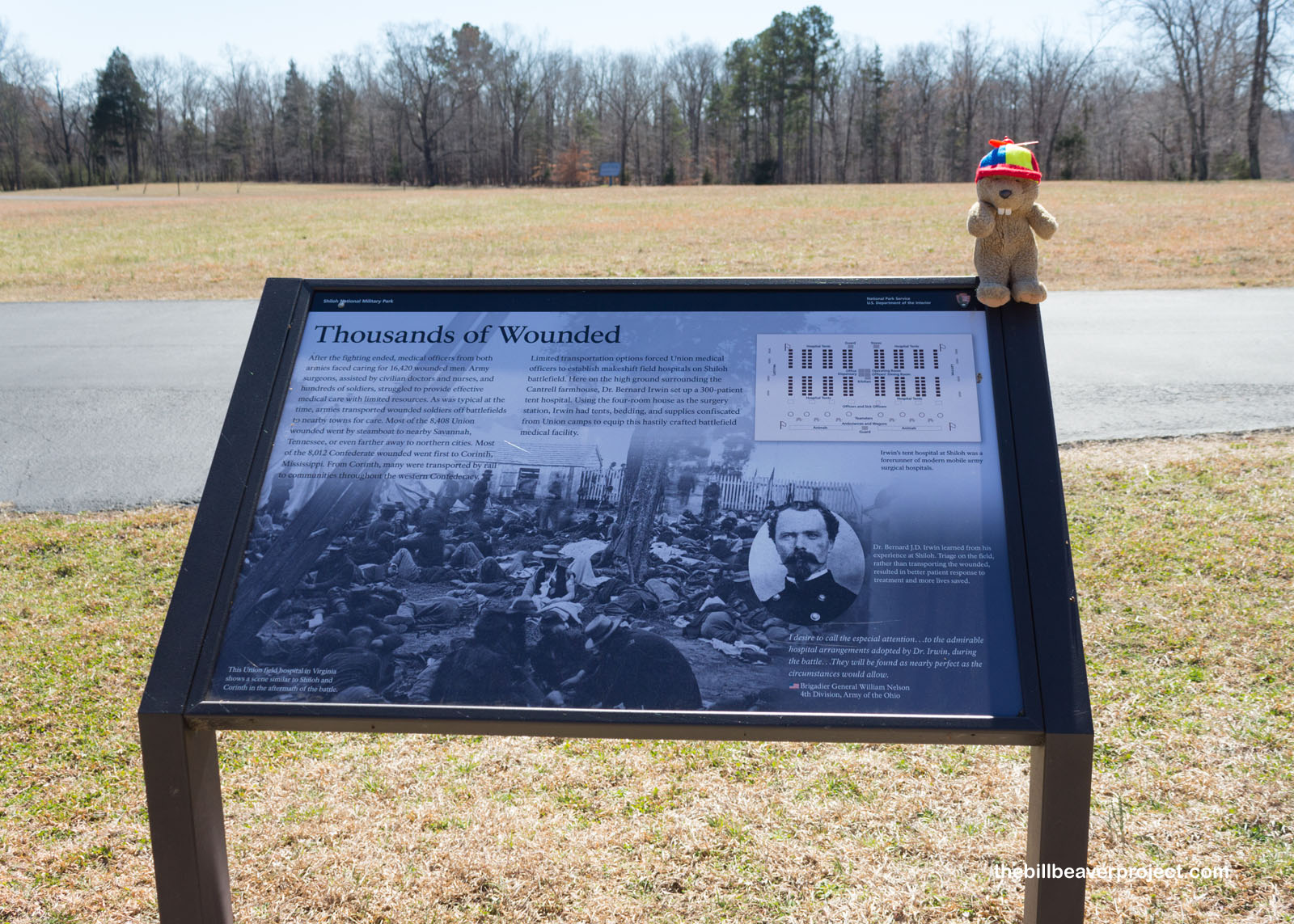 |
I spotted a stack of cannonballs that reminded me of Chickamauga National Battlefield Park, but unlike the other park, which stacked cannonballs to show where officers fell, this one marked the headquarters of Colonel David Stuart’s 2nd Brigade, 5th Division of the Army of the Tennessee. Just north of here, however, General Johnston, leader of this entire Confederate force, was shot in the leg and died of blood loss toward the end of the first day of fighting!
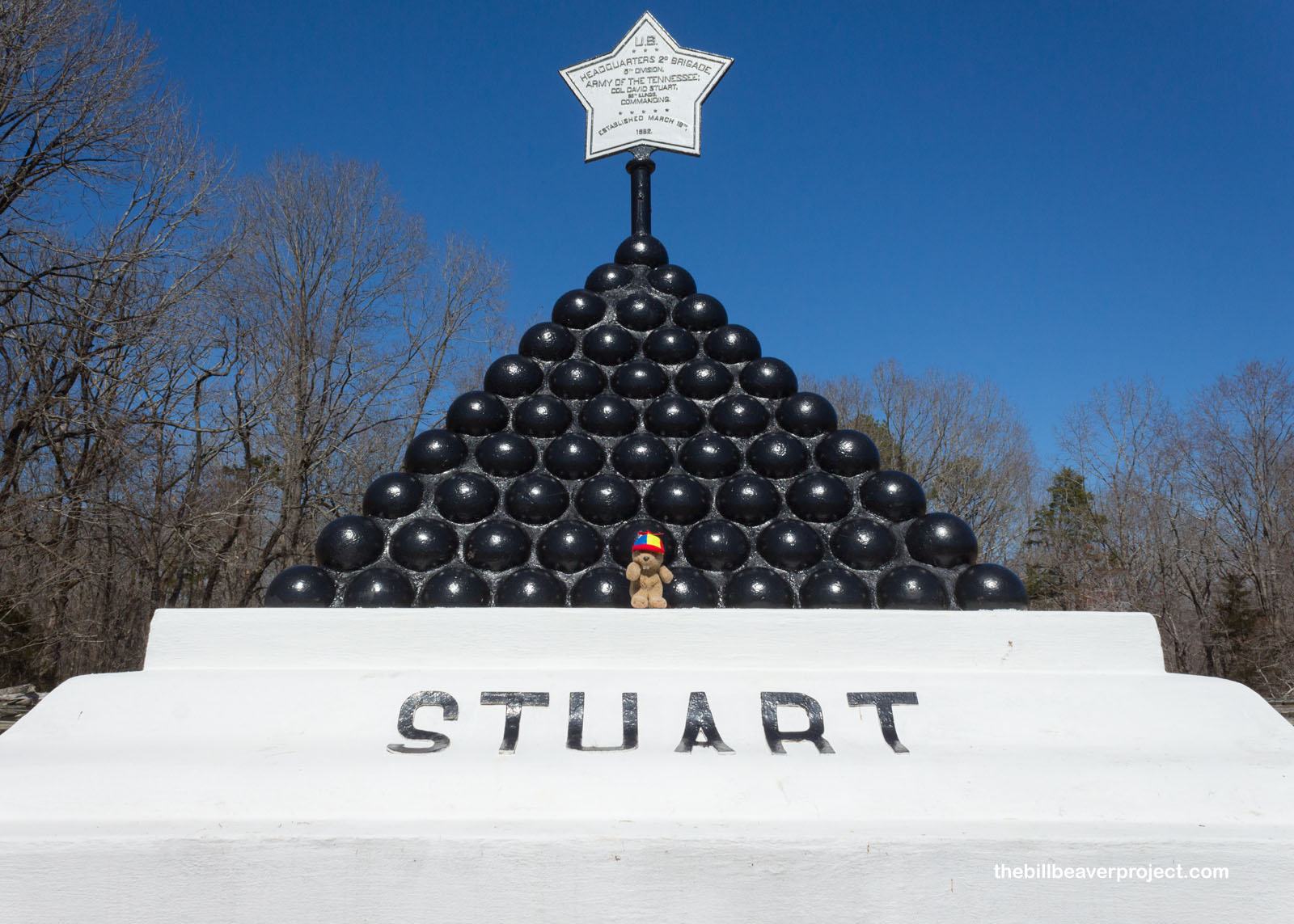 |
A stone’s throw to the northwest stands the only structure of 70 to survive the Battle of Shiloh! It was originally located elsewhere, but William Manse George had it moved back to his property, where he farmed the land of his mother-in-law, Sarah Bell, once the battle was over. Whoever owned it originally remains a mystery!
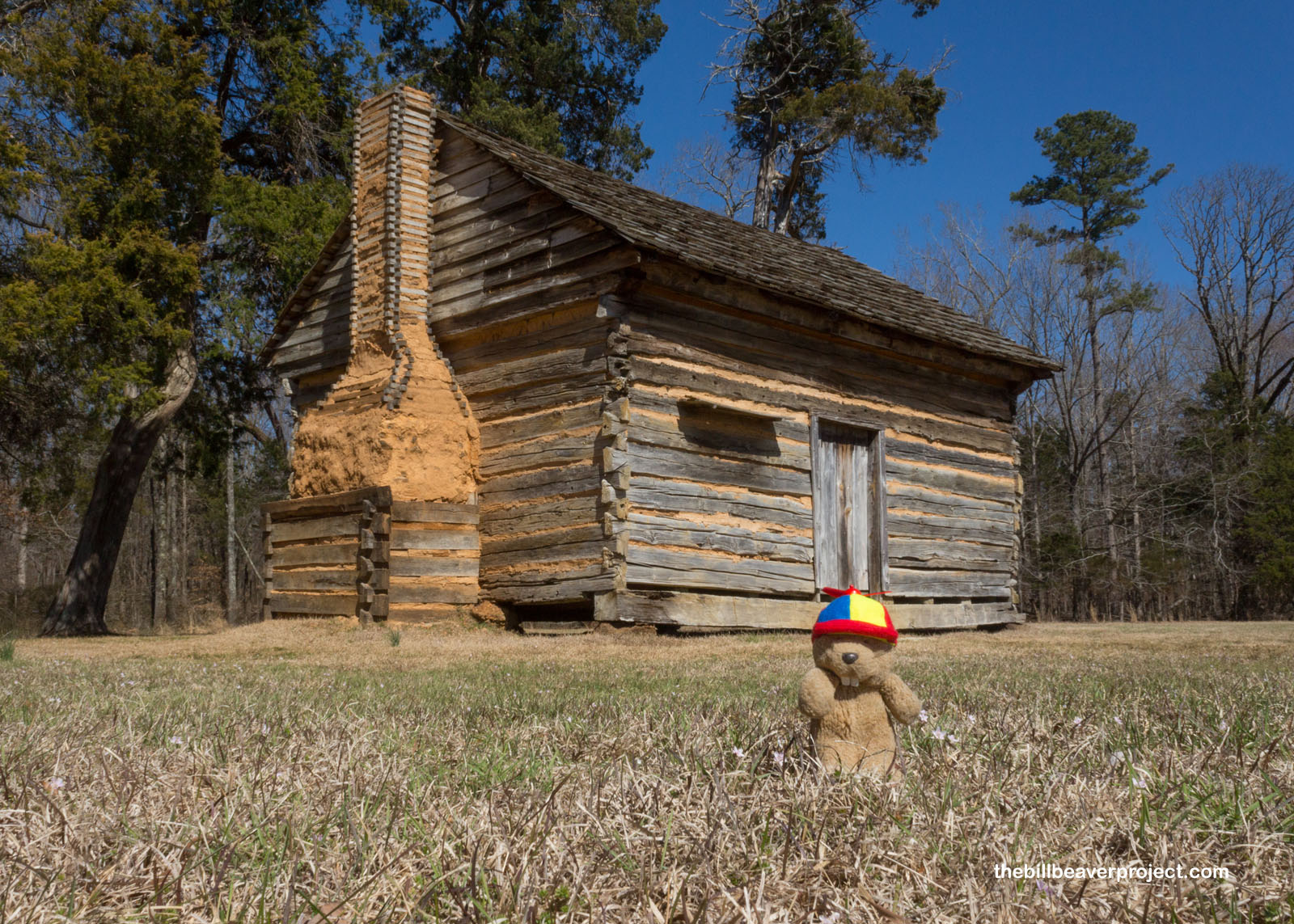 |
The Bloody Pond next to the cabin was another water feature that sure seemed peaceful looking at it in 2022. But on April 6, 1862, it earned its nickname as Confederate forces took control of it, then Union forces regained the next day!
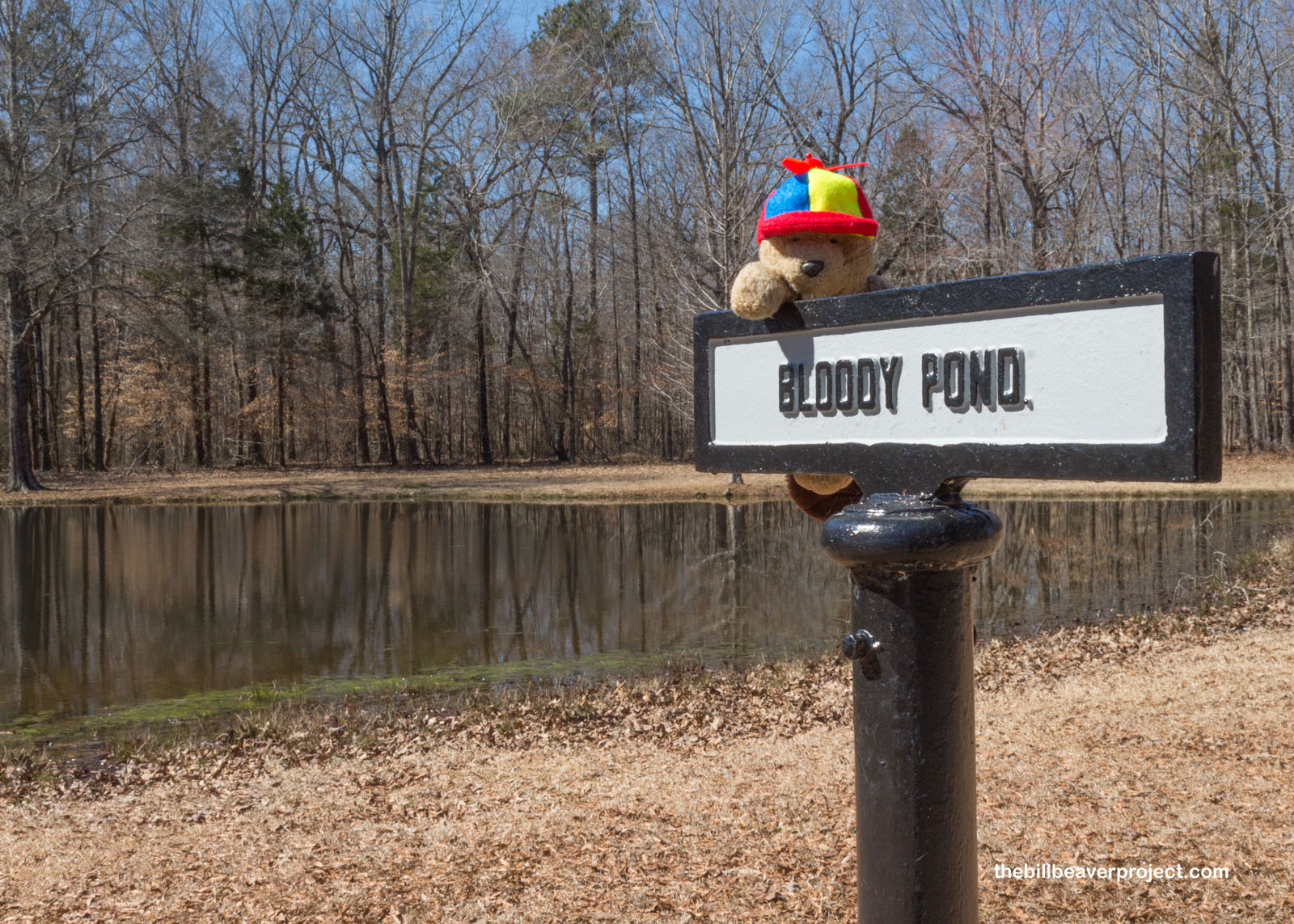 |
How did that happen, you ask? Well, after the Union got pushed all the way back to Pittsburg Landing, reinforcements showed up overnight! See, General Grant’s original plan to meet up with General Buell had taken longer than expected, but after dark, thousands of fresh Union soldiers and two gunboats, the Lexington and the Tyler pulled up the Tennessee River in preparation for a change of fortune on April 7th!
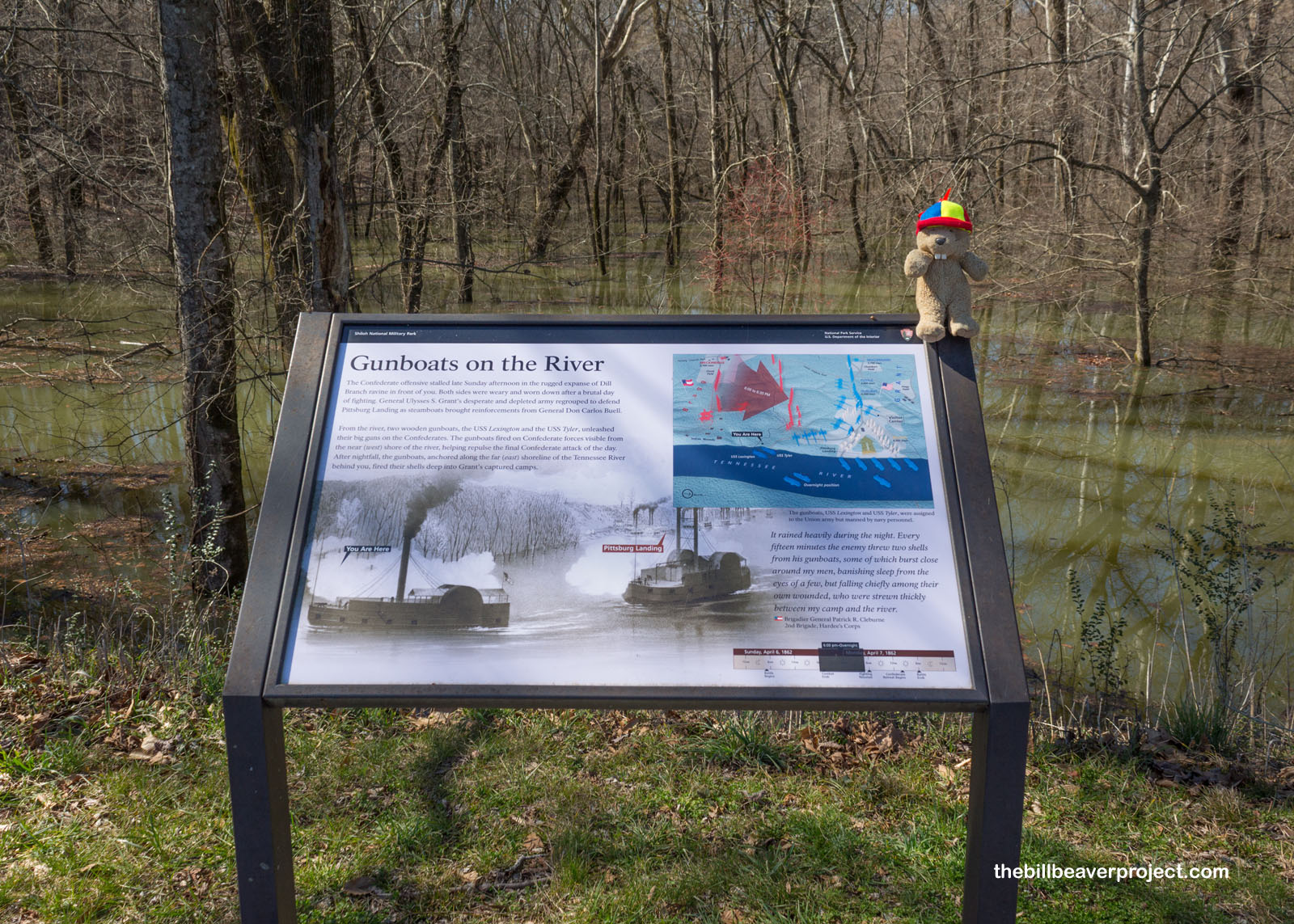 |
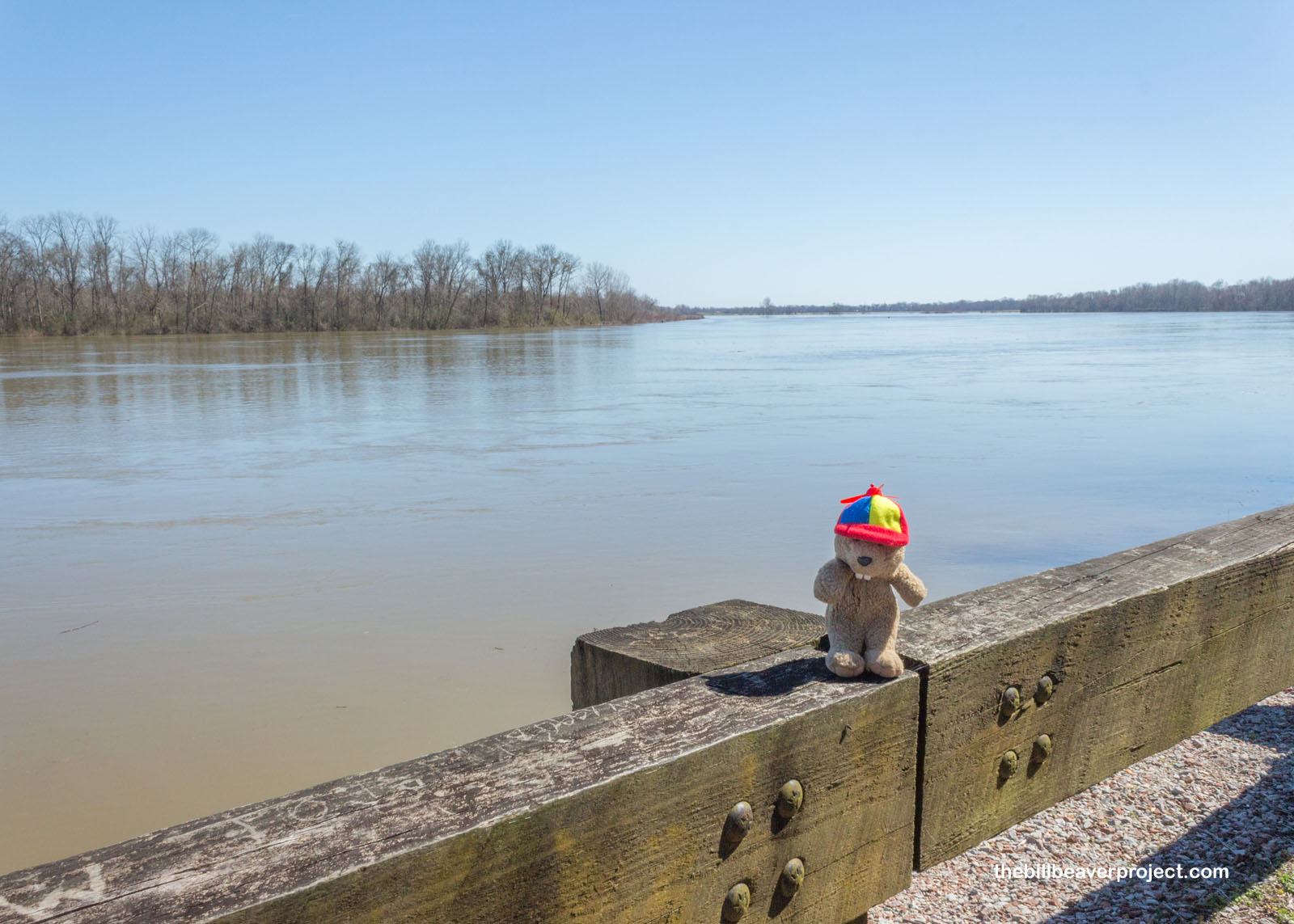 |
Things went very differently the next morning! The Union had more troops, and the Confederates had a new leader: General Pierre Gustave Toutant-Beauregard, who had led the first attack of the Civil War at Fort Sumter on April 12, 1861! He may have regretted that choice, because just under a year later, he found himself retreating across fields and ponds (like Water Oaks Pond) alike, ultimately withdrawing back to Corinth, where the last Confederate offensive in Mississippi was met with defeat in October! All told, the battle at Shiloh had a toll of 23,746 casualties, reminding everyone watching that this war was going to come with some major costs!
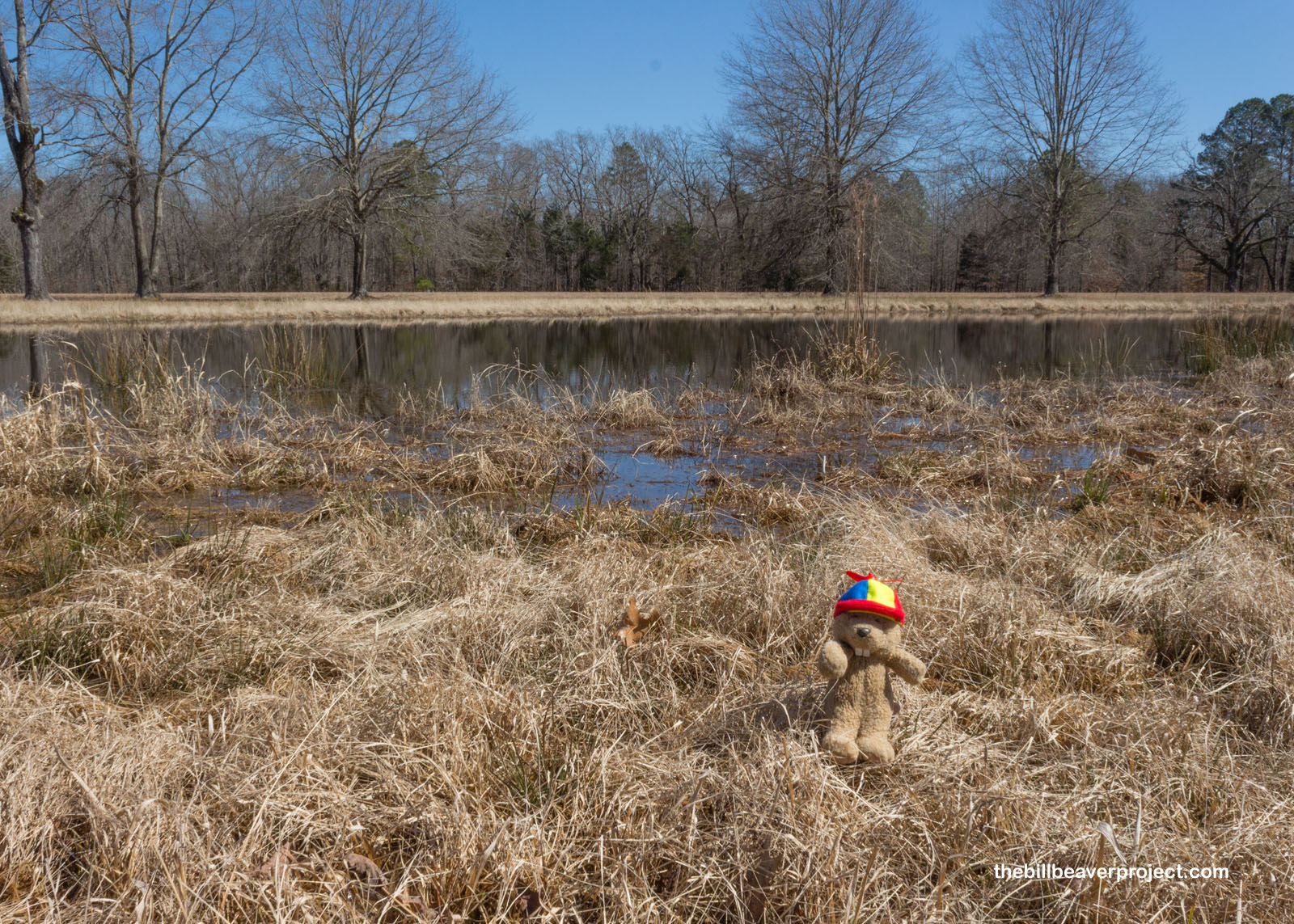 |
But not every part of Shiloh is associated with bloodshed. Contained within the battlefield is an area that existed long before the Civil War, dating back at least 800 years! Today, this area is known as Shiloh Indian Mounds National Historic Landmark!
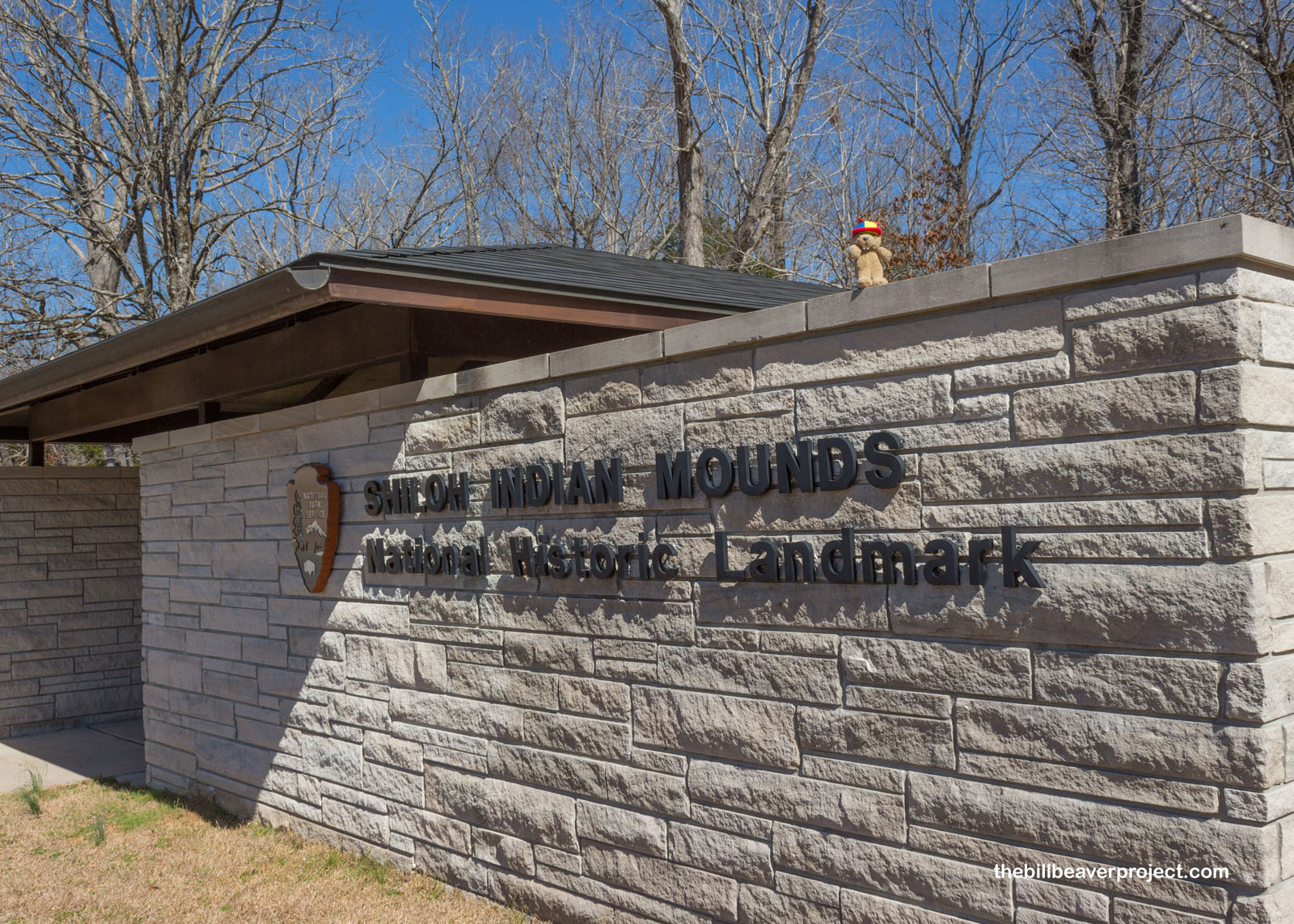 |
Mound builders built mounds across the Midwest, from the Great Lakes to the Gulf. They’re generally called the Mississippian Culture for their proximity to the Mississippi River Valley. You may have seen some others in past blogs about Hopewell Culture, Poverty Point, and Ocmulgee! A short trail led me to town through the woods, past what was known as a borrow pit, where folks could gather clay for housing and pottery! Today, this pit was just a pond, full of amorous frogs!
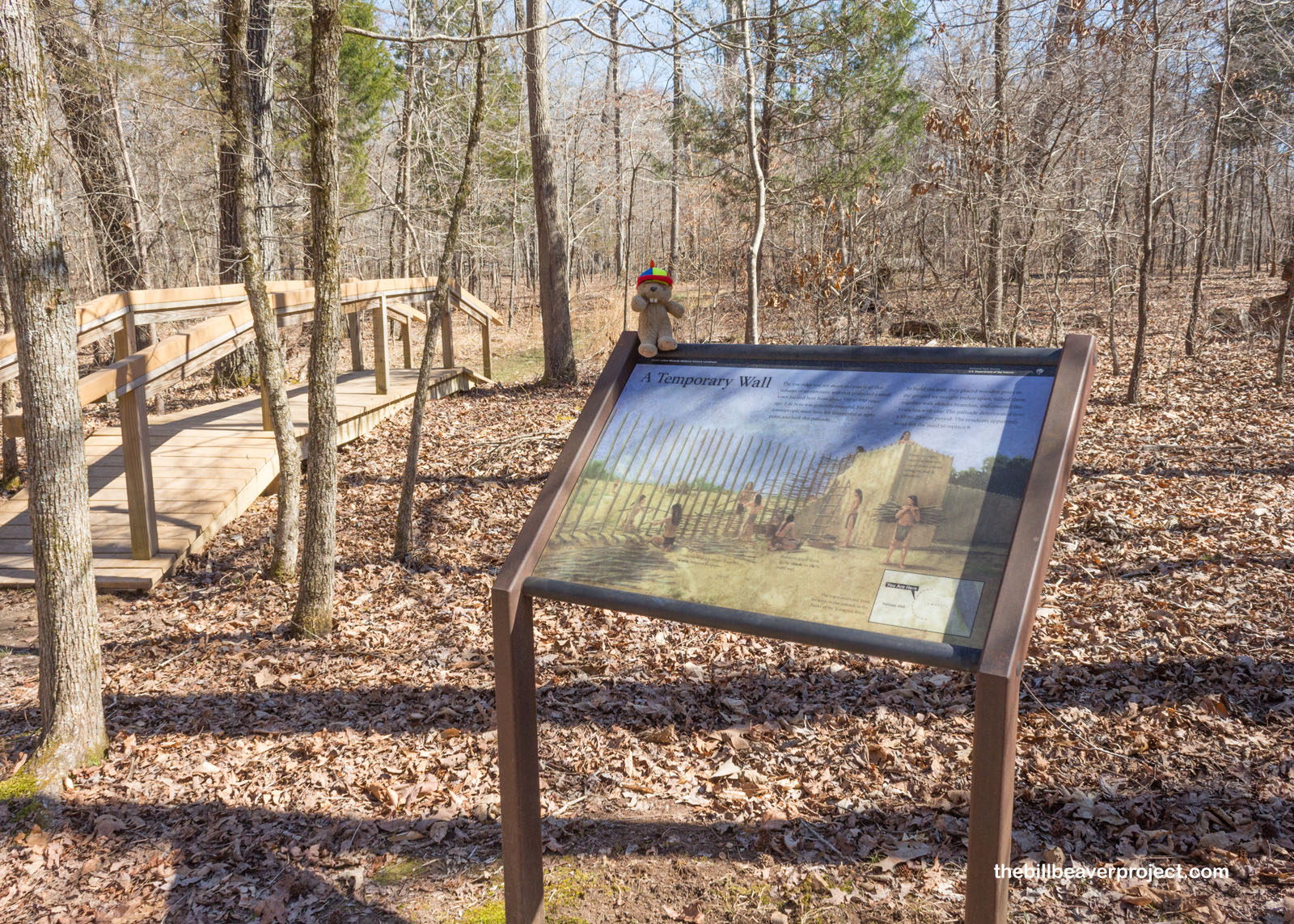 |
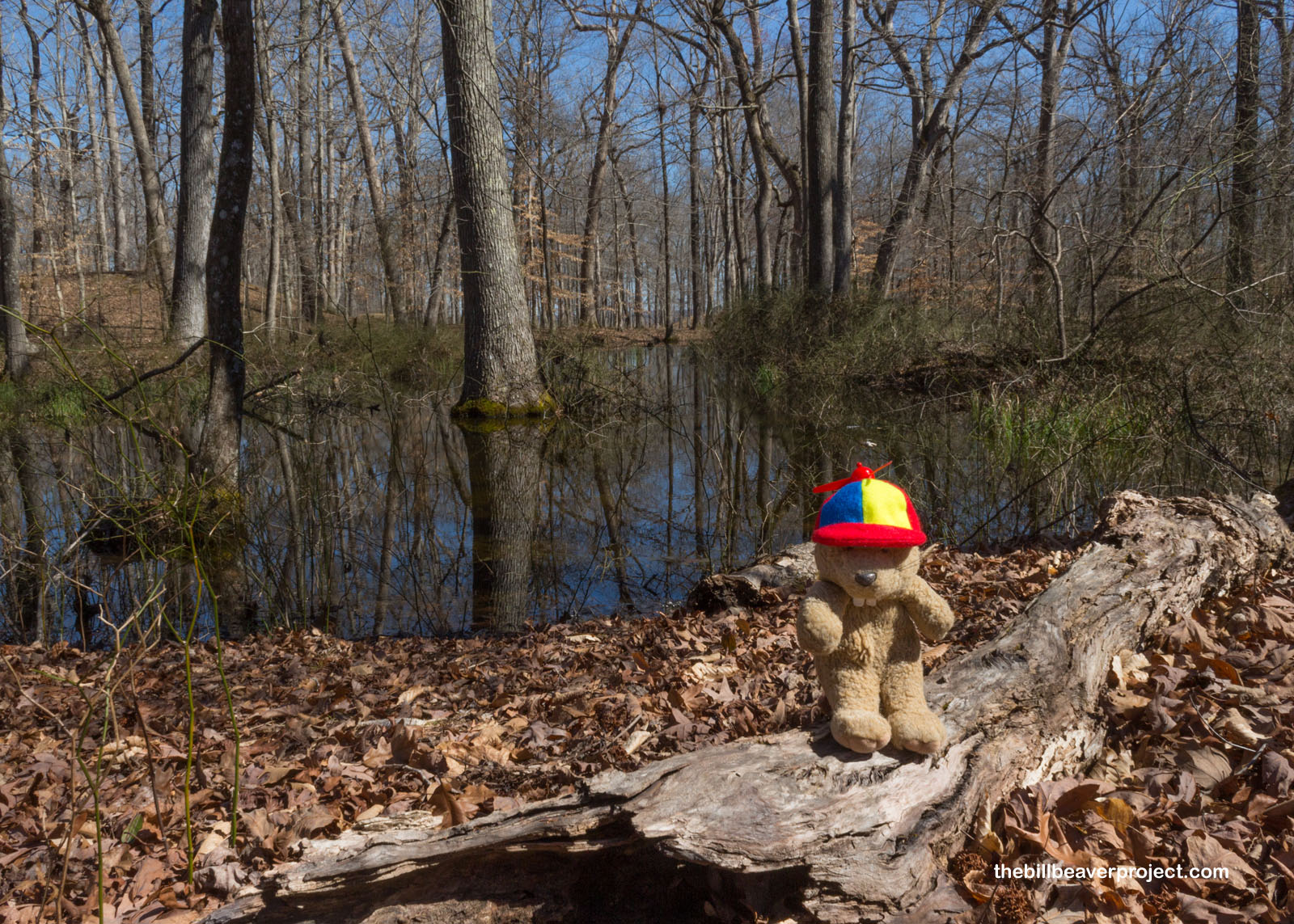 |
Arriving in town, I was able to see the three surviving mounds from afar! The Shiloh mounds were in a very strategic location, both for being on the river where trade was easy, and because, somehow, they avoided being plowed, blown up, or otherwise destroyed by construction like the Savannah mounds to the south! That’s given archaeologists a good idea of how this town was laid out. Leadership lived on the high mounds, while most folks lived in houses below the mounds. This is the largest of six mound towns along the Tennessee River and gives the impression that Mississippian culture, unlike California’s tribelets, was hierarchical and governed by an elite chief!
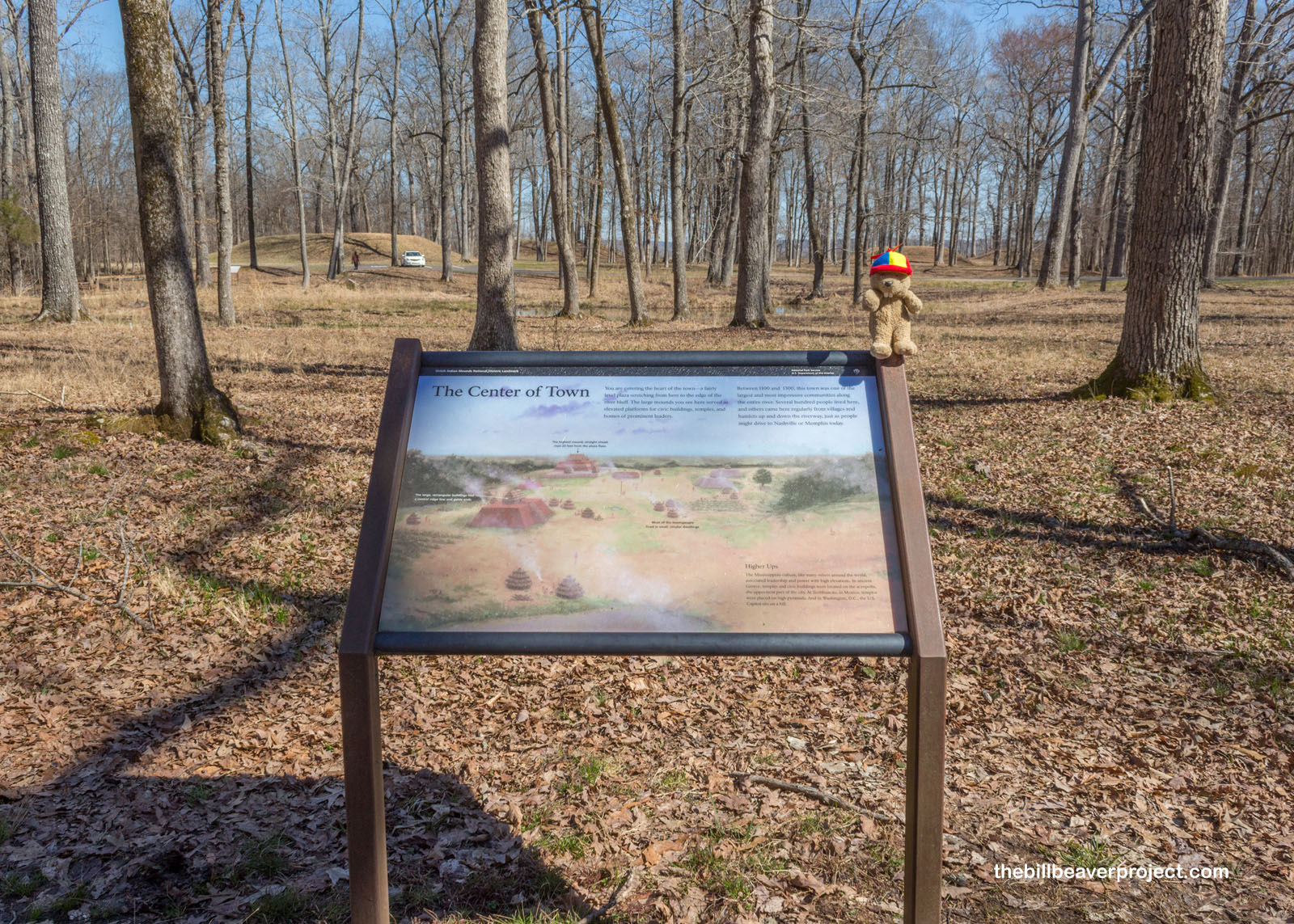 |
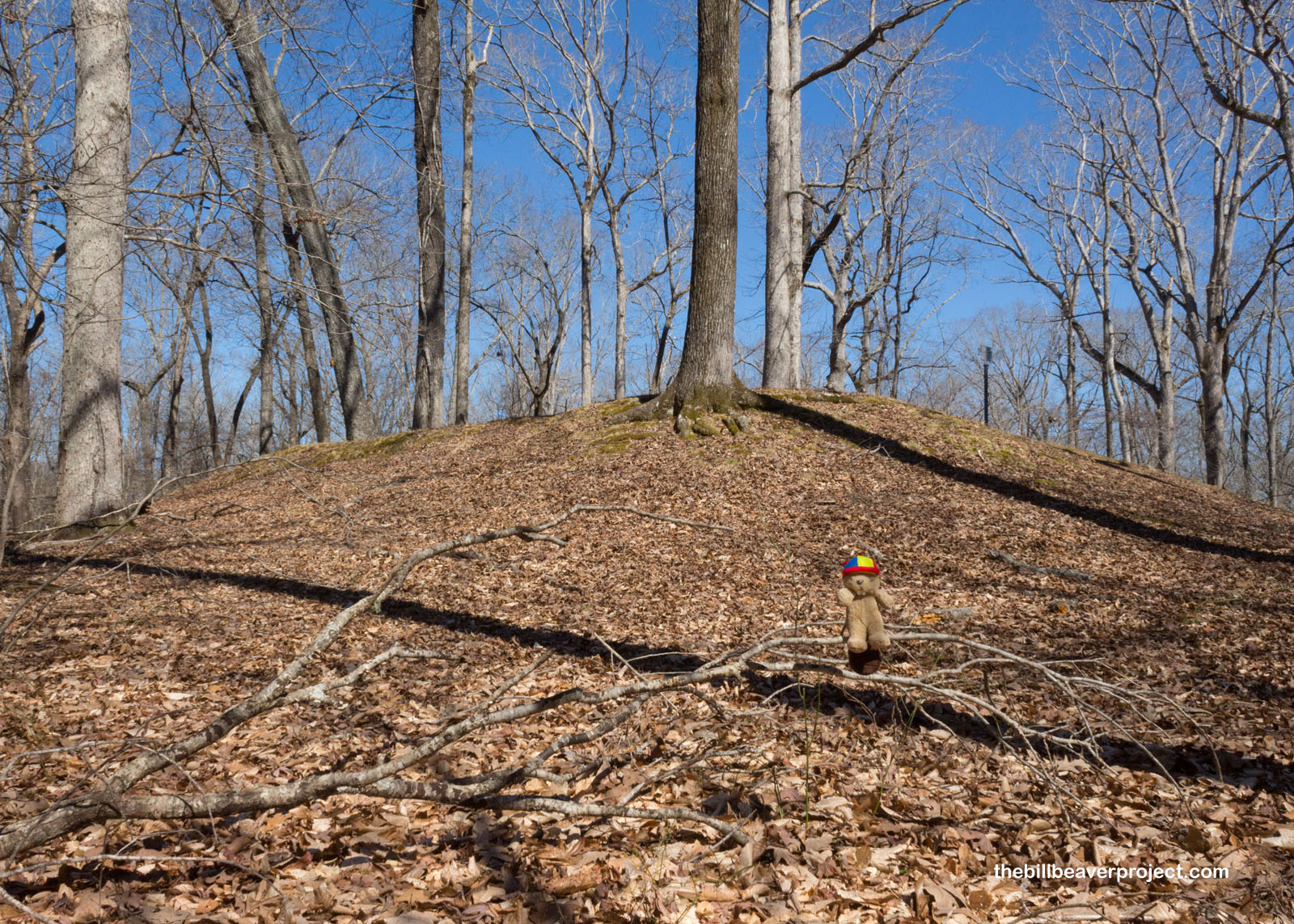 |
Since the folks who lived here left behind no written record, much of our knowledge about the Shiloh mounds comes from excavations. The first was in 1899 under Cornelius Cadle, who dug into Mound C at the southeast corner of town and found a red clay pipe made at Cahokia near modern St. Louis! Later studies in 1933 and 1934 found the clay foundations of houses and a wall surrounding the entire town! This is a super rare in the eastern US!
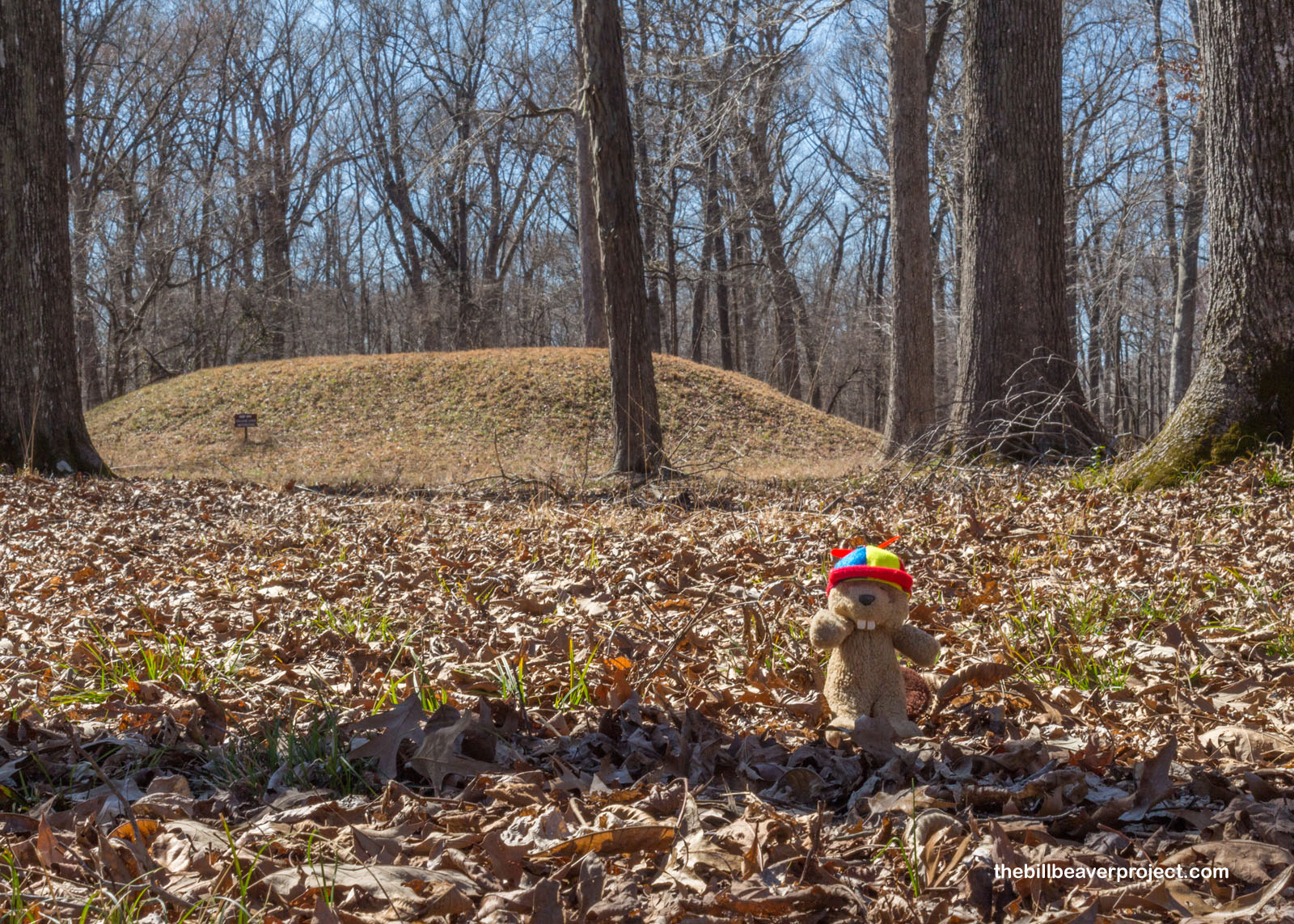 |
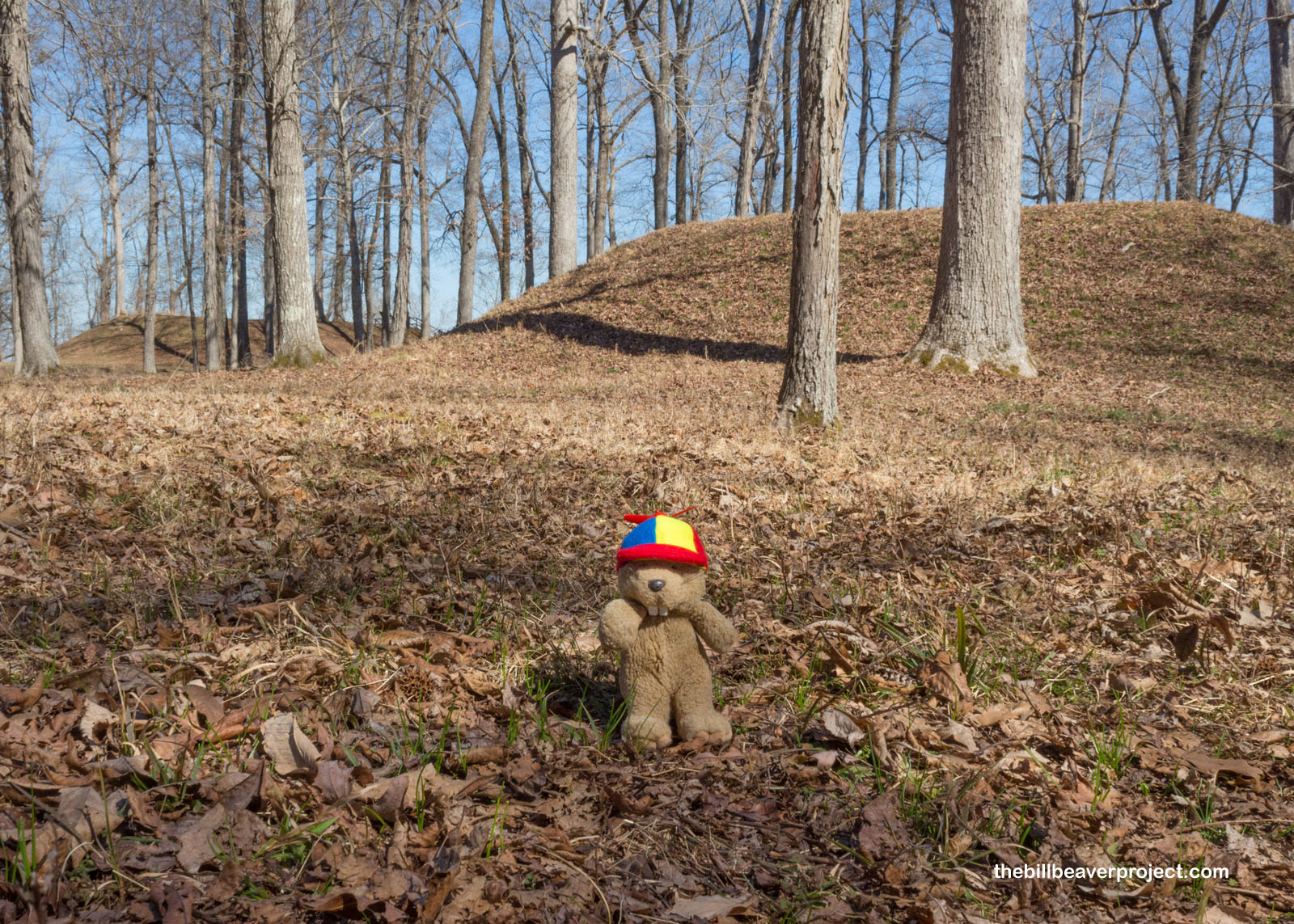 |
For reasons unknown, the residents of the Shiloh mounds began to disappear around 600 years ago. It may have been because the soil was depleted from generations of corn growth, but it’s hard to know for sure. They may have moved in with other tribes in the area, like the ancestors of the Chickasaw, who lived closest to here. Like many mysteries, this one may never be solved. All I knew for sure was that I also had to disappear from this site, chasing daylight as always!
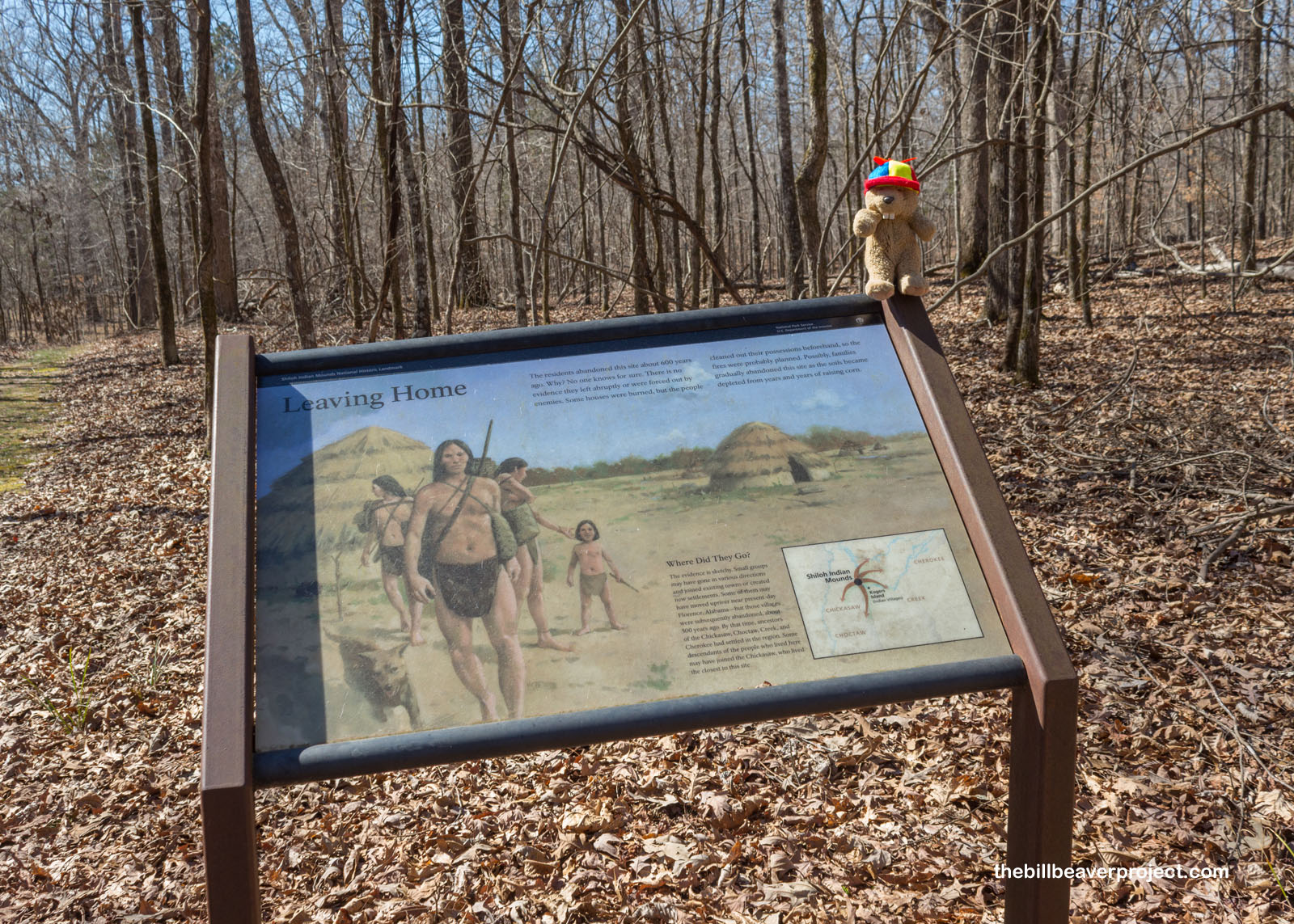 |
If you’ll remember from my January visit to Birmingham, Alabama, I made a map error and skipped Birmingham Civil Rights National Monument! I’d sketched out a bunch of maps and plane routes to go back, but at the end of the day, I realized I could buckle down and chase the sunset three hours east from Shiloh to Birmingham and fix my mistake! So that’s how I ended up in Birmingham once again at Kelly Ingram Park!
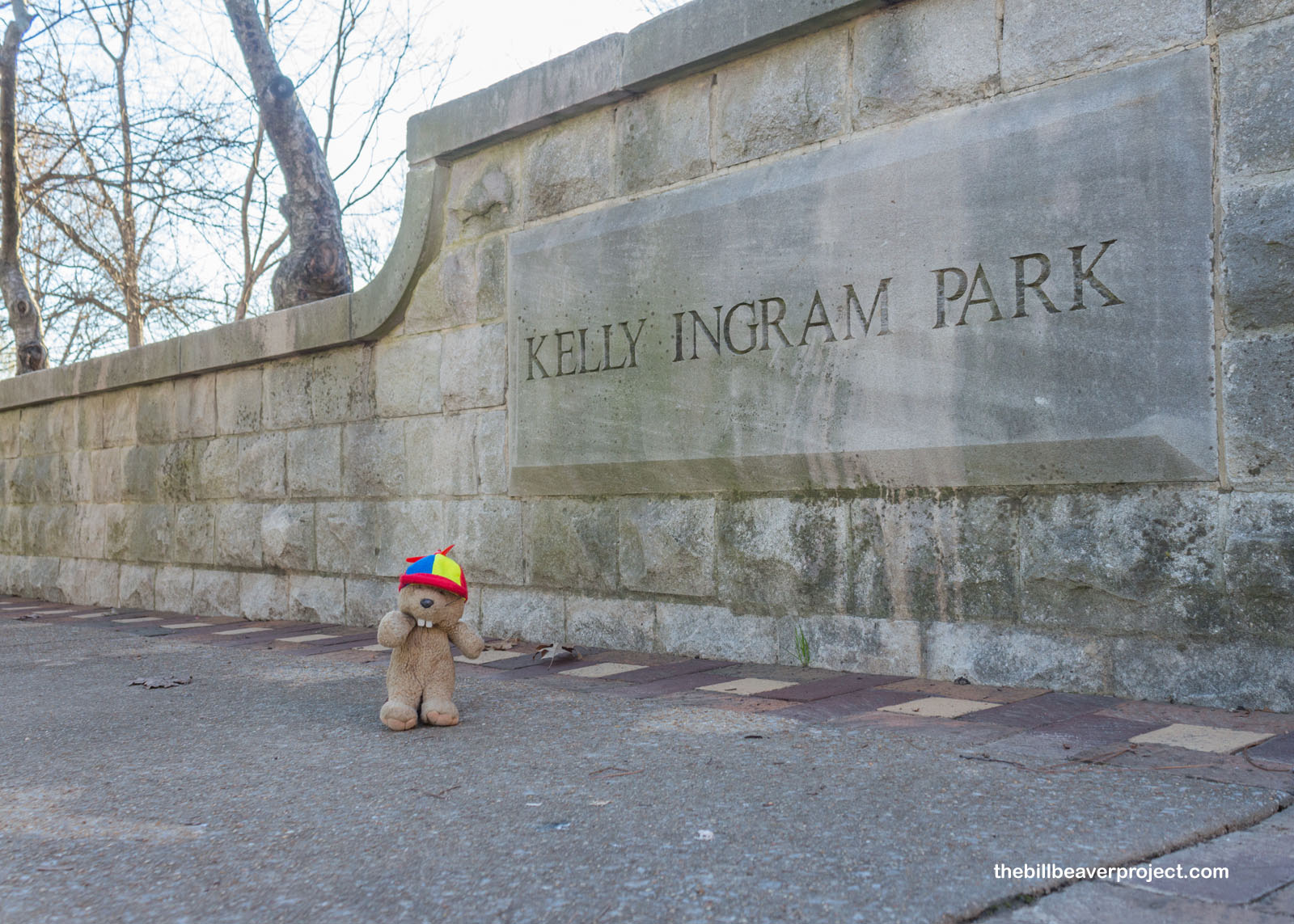 |
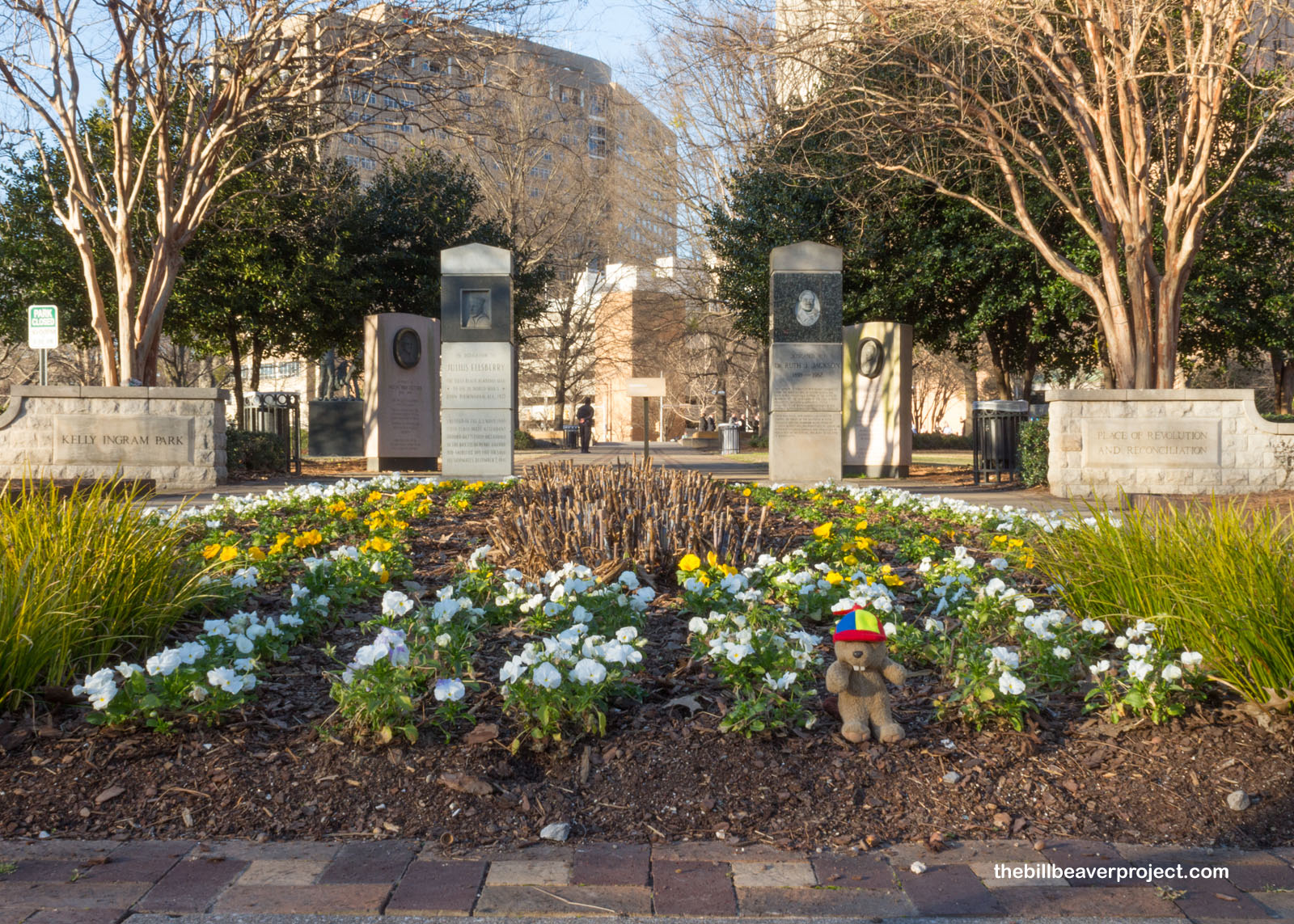 |
And it’s a good thing I did come back, because this park—named for Osmond Kelly Ingram, an Alabama native and first sailor killed during World War I—was truly Ground Zero for the civil rights movement in 1963. Two years before the events in Selma and Montgomery, this was where Reverend Fred Shuttlesworth teamed up with the Southern Christian Leadership Conference (SCLC) to run Project C. While C may be for “cookie,” it also stands for “Confrontation!”
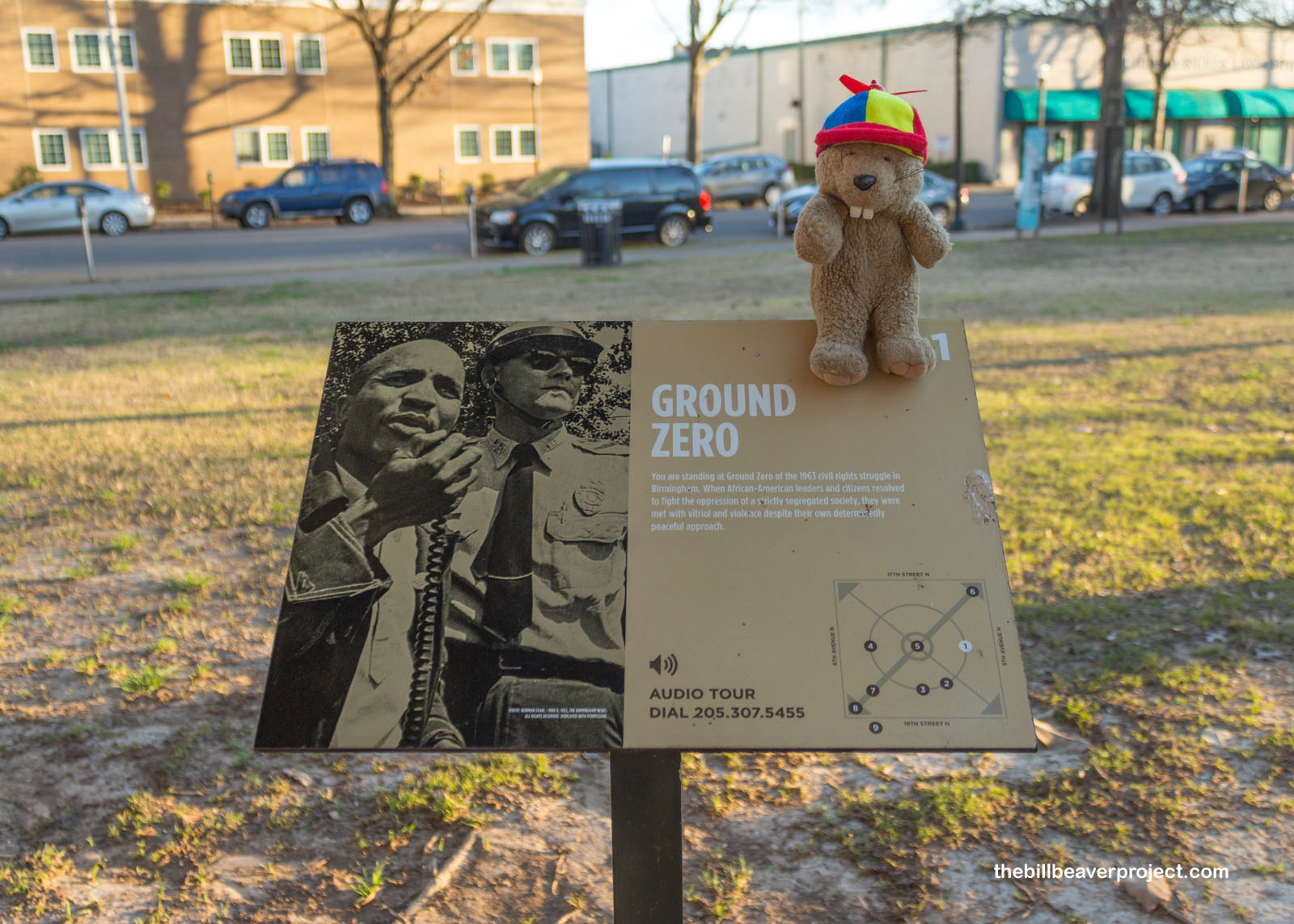 |
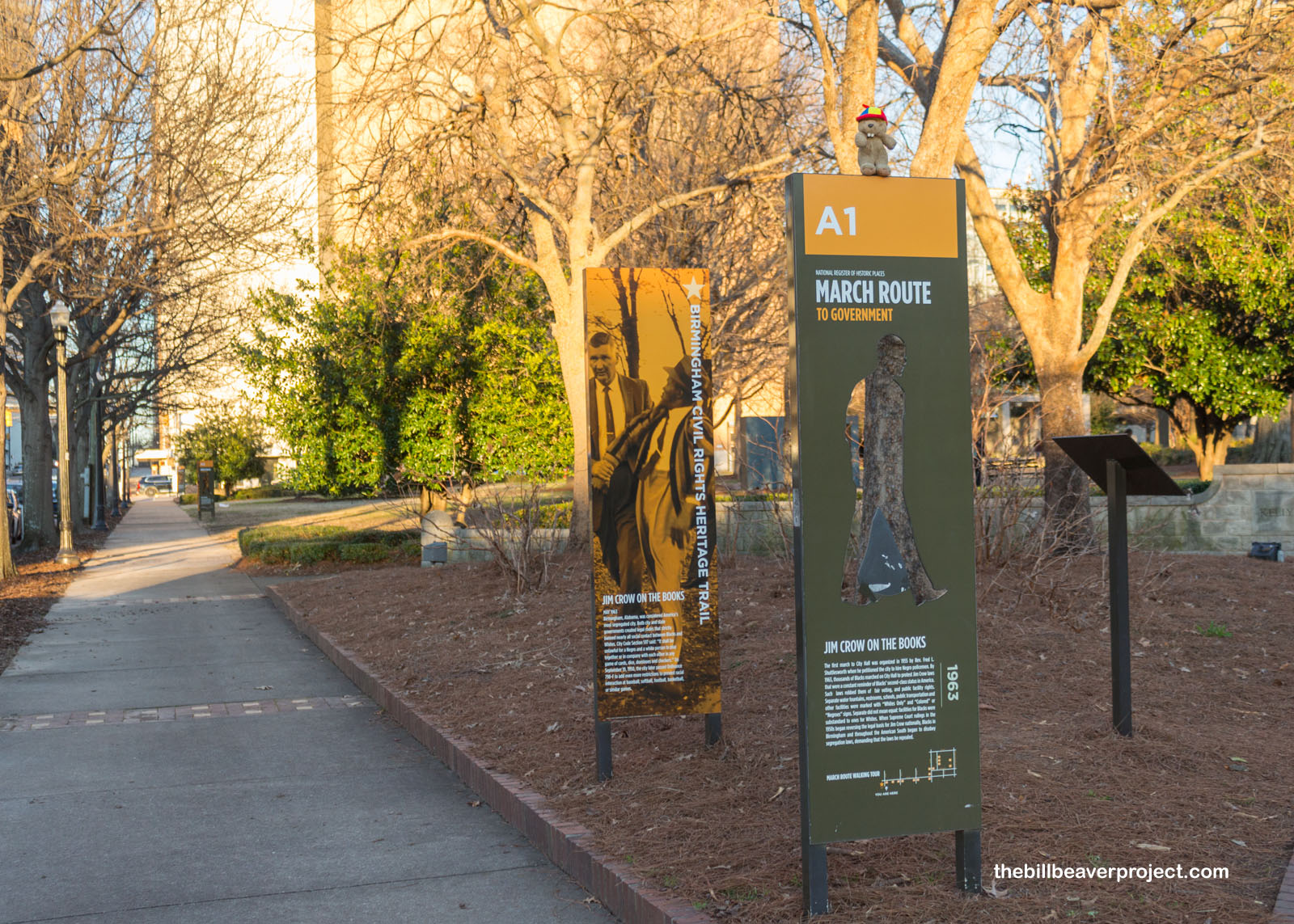 |
That confrontation was with another “C,” Public Safety Commissioner Eugene “Bull” Connor, enforcer of the Jim Crow status quo, which Reverend Shuttlesworth had been protesting in Birmingham since 1955! Many protests took place in this park, including the Children’s Crusade of May 2, 1963 when 1,000 kids skipped school to protest unfair living situations and 600 were put in jail for it! This was the scene of some of the most brutal moments in the fight for civil rights, where police unleashed high pressured cannons and attack dogs on the peaceful protestors! Statues here in the park capture some of those moments.
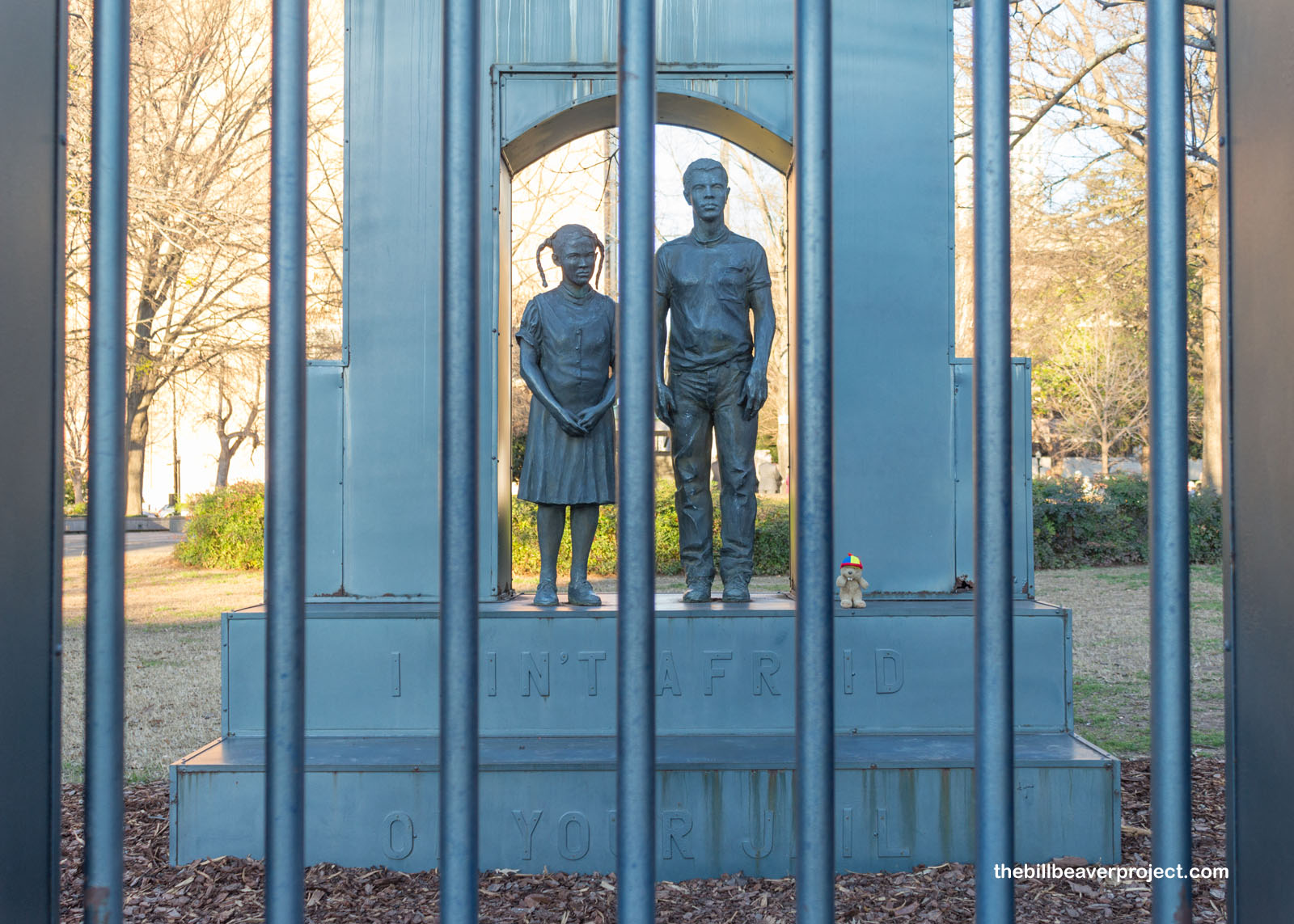 |
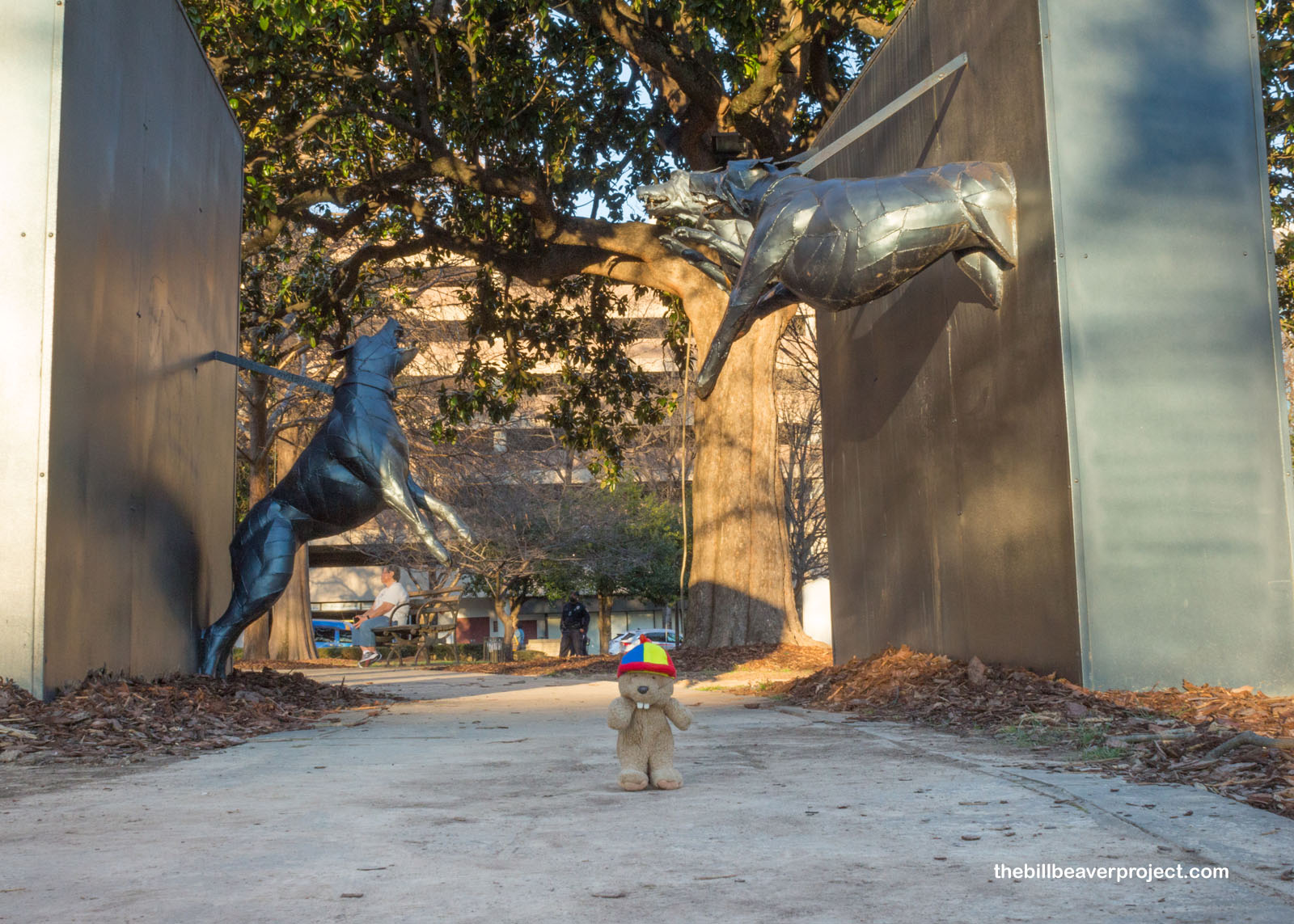 |
These images drew national attention to the brutality against Black folks in the South, and no one was immune. Dr. Martin Luther King, Jr. was arrested 30 times while participating in Project C, which gave the world his Letter from a Birmingham Jail! It was not for nothing, though. The SCLC made a deal with the Birmingham Senior Citizen’s Council to suspend protests in exchange for desegregation of businesses! A subsequent Birmingham Truce Agreement, desegregating public facilities, releasing jailed protestors, and enhancing employment opportunities for Black folks, went into effect on May 10, 1963!
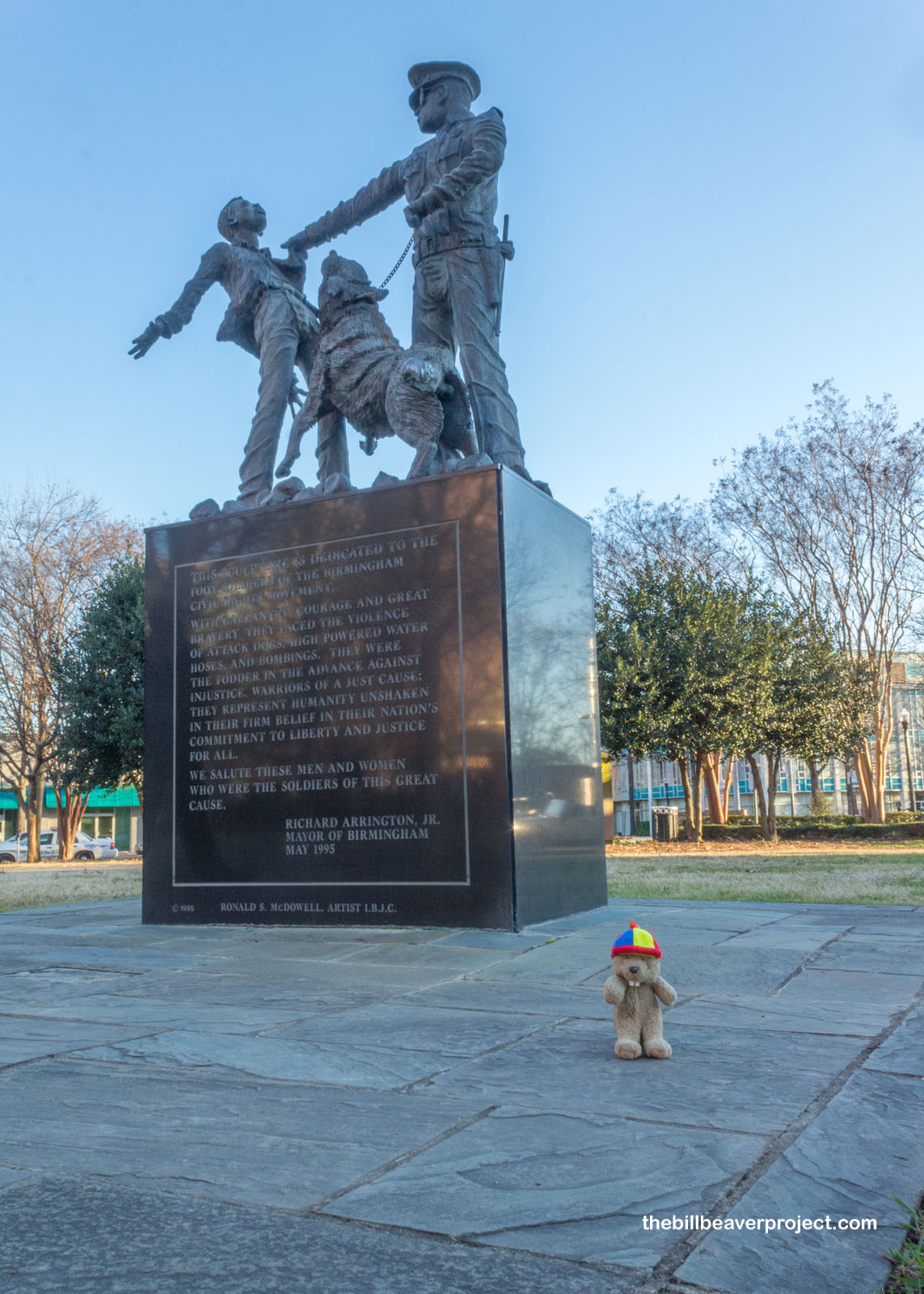 |
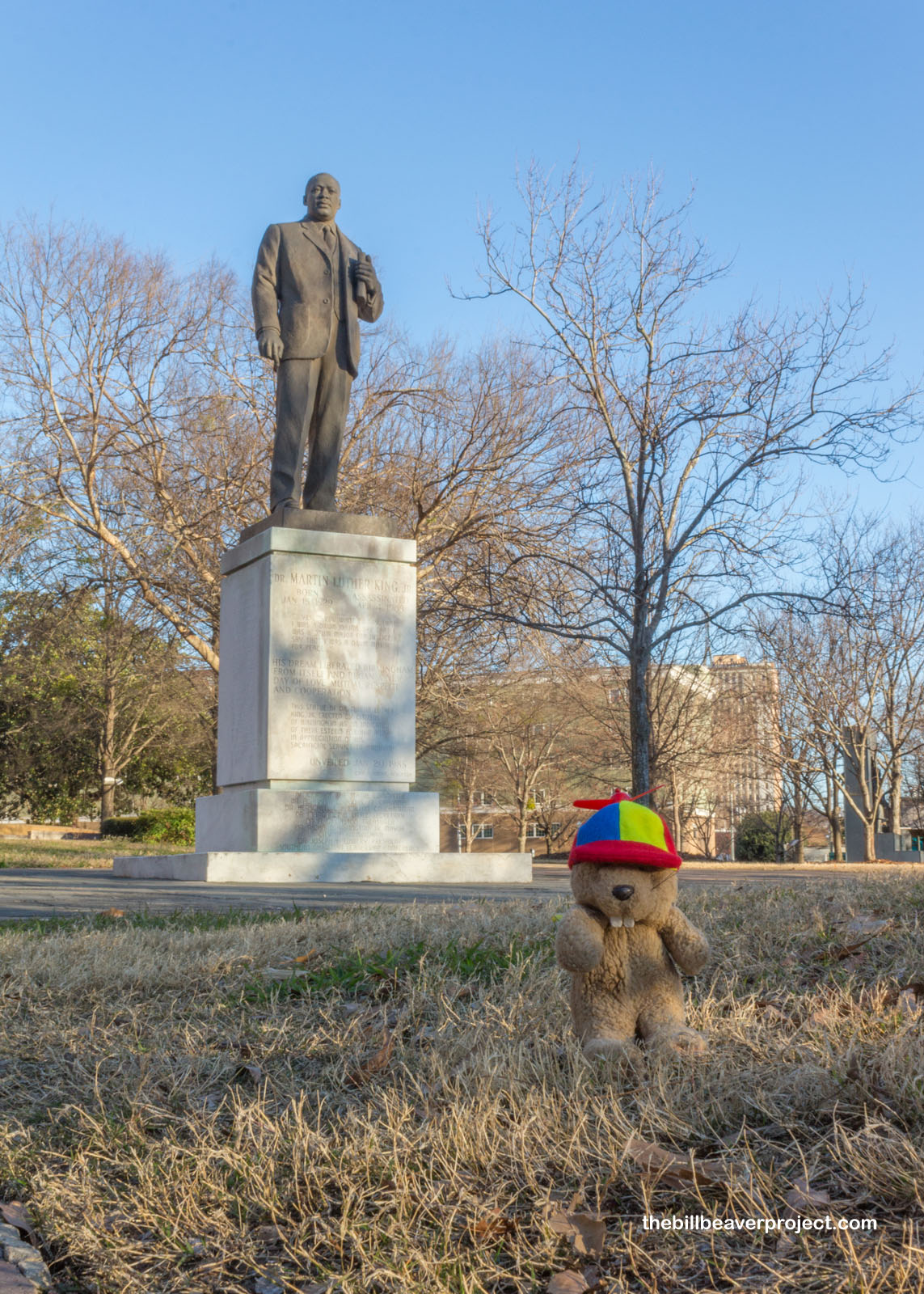 |
But that didn’t end the troubles for Black folks in Birmingham, because injustice has a way of rearing its ugly head again and again. I was reminded of this loud and clear when I stumbled upon a live prayer service in the park in support of Ukraine, which was just invaded by Russia less than a week ago on February 24! The theme of oppressive violence was unmistakable, and I could think of nowhere better to cry out against it than here in Birmingham.
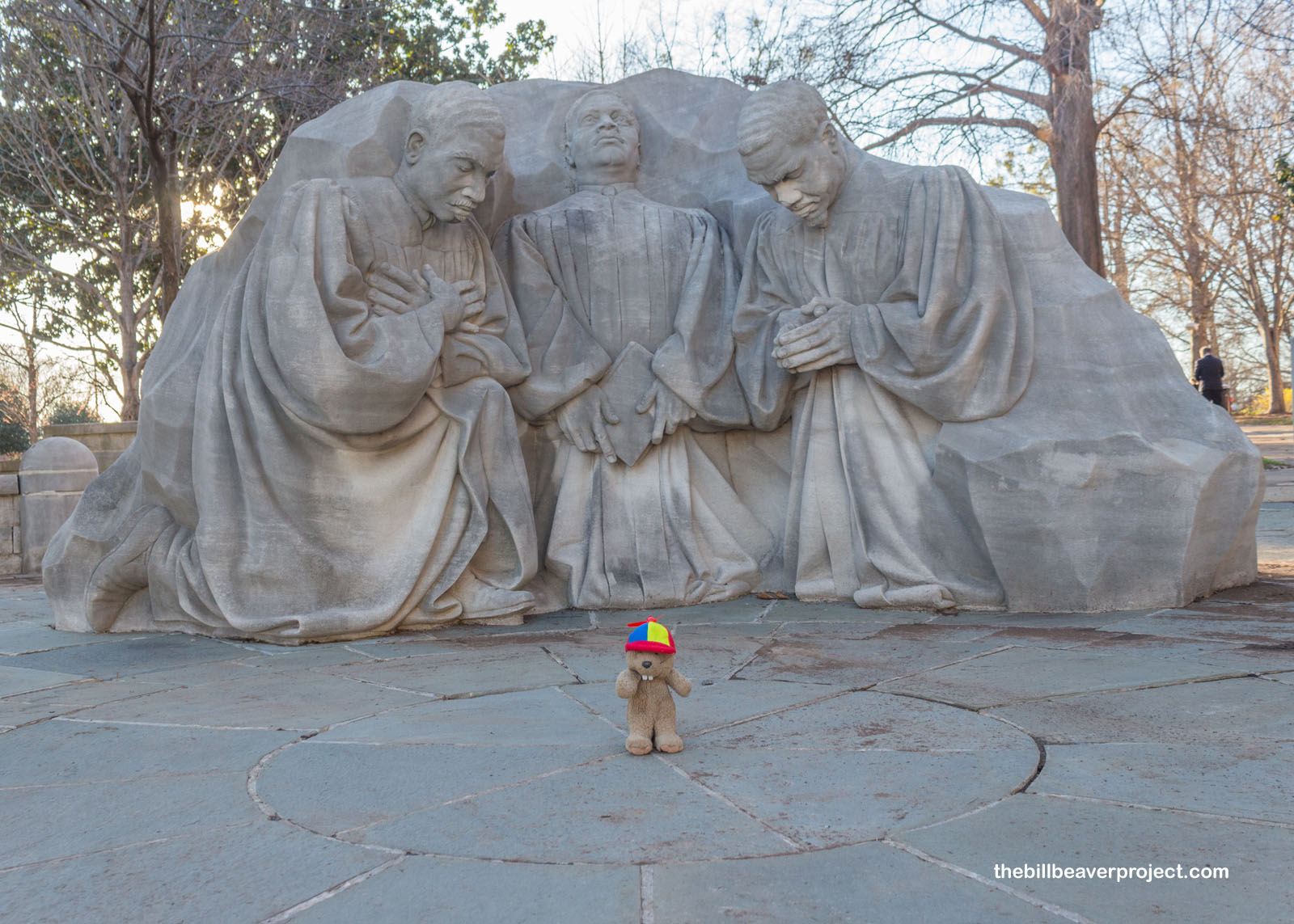 |
And truly, the violence of the ’60s didn’t end in Birmingham with the Truce Agreement, since neither Governor Wallace nor Bull Connor would accept any desegregation deal. Later in 1963, segregationists bombed the AG Gaston Hotel where Project C leadership was staying, and they also bombed the home of Dr. King’s brother, Alfred. President Kennedy, affected by the images from Birmingham, sent in 3,000 federal troops to tamp down on the violence!
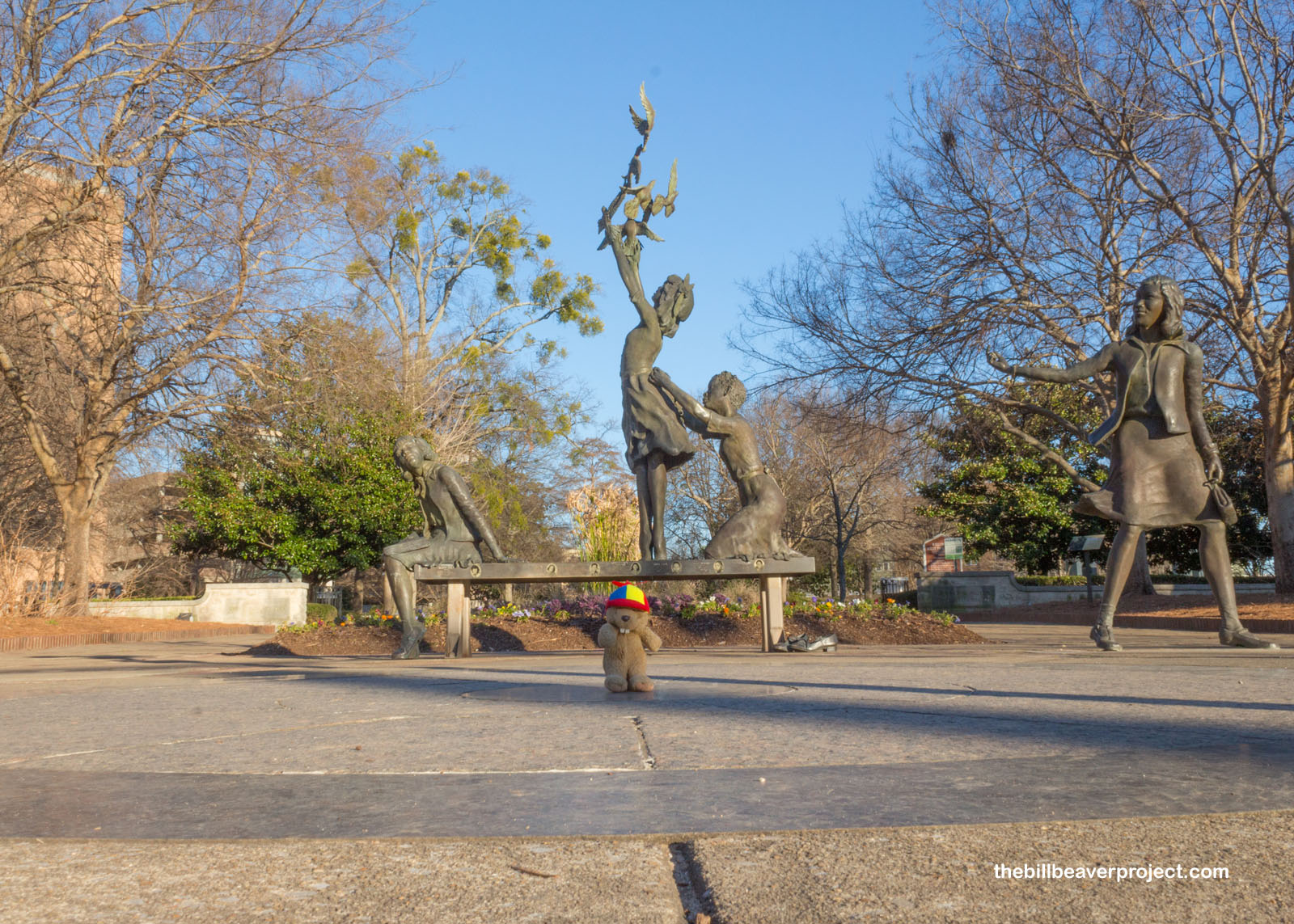 |
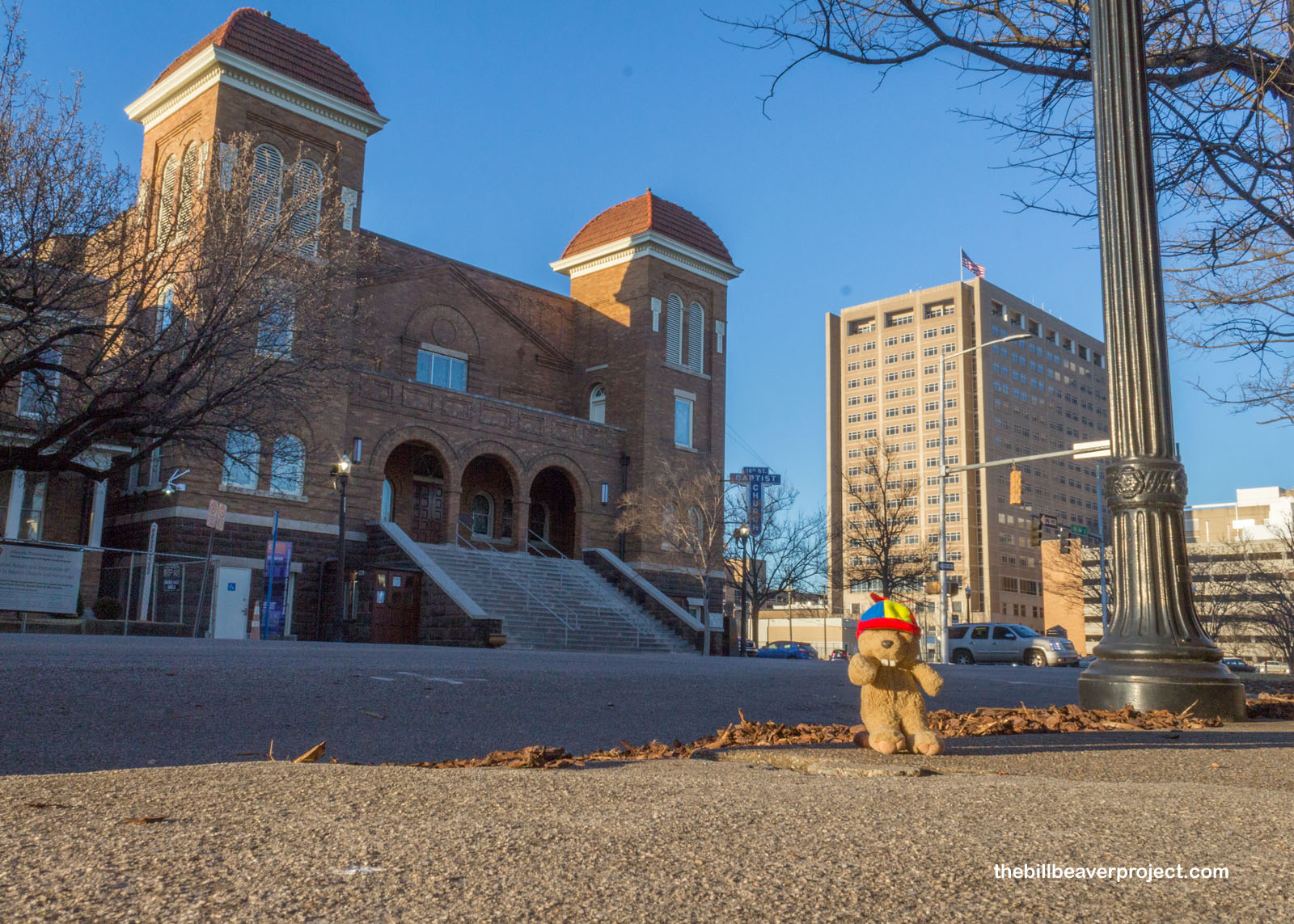 |
Even then, it wasn’t enough. The 16th Street Baptist Church, a main center for organizing and staging protests, was bombed on September 15, 1963 by the Ku Klux Klan, whose robes and leadership were deeply connected to the battle at Shiloh. The bombing killed four girls, Addie Mae Collins, Cynthia Wesley, Carole Robertson, and Carol Denise McNair, and while the FBI did name four suspects, J. Edgar Hoover closed the case without charges in 1968. It wasn’t until 1977 that the case was reopened, and prosecutions weren’t complete until May 21, 2002!
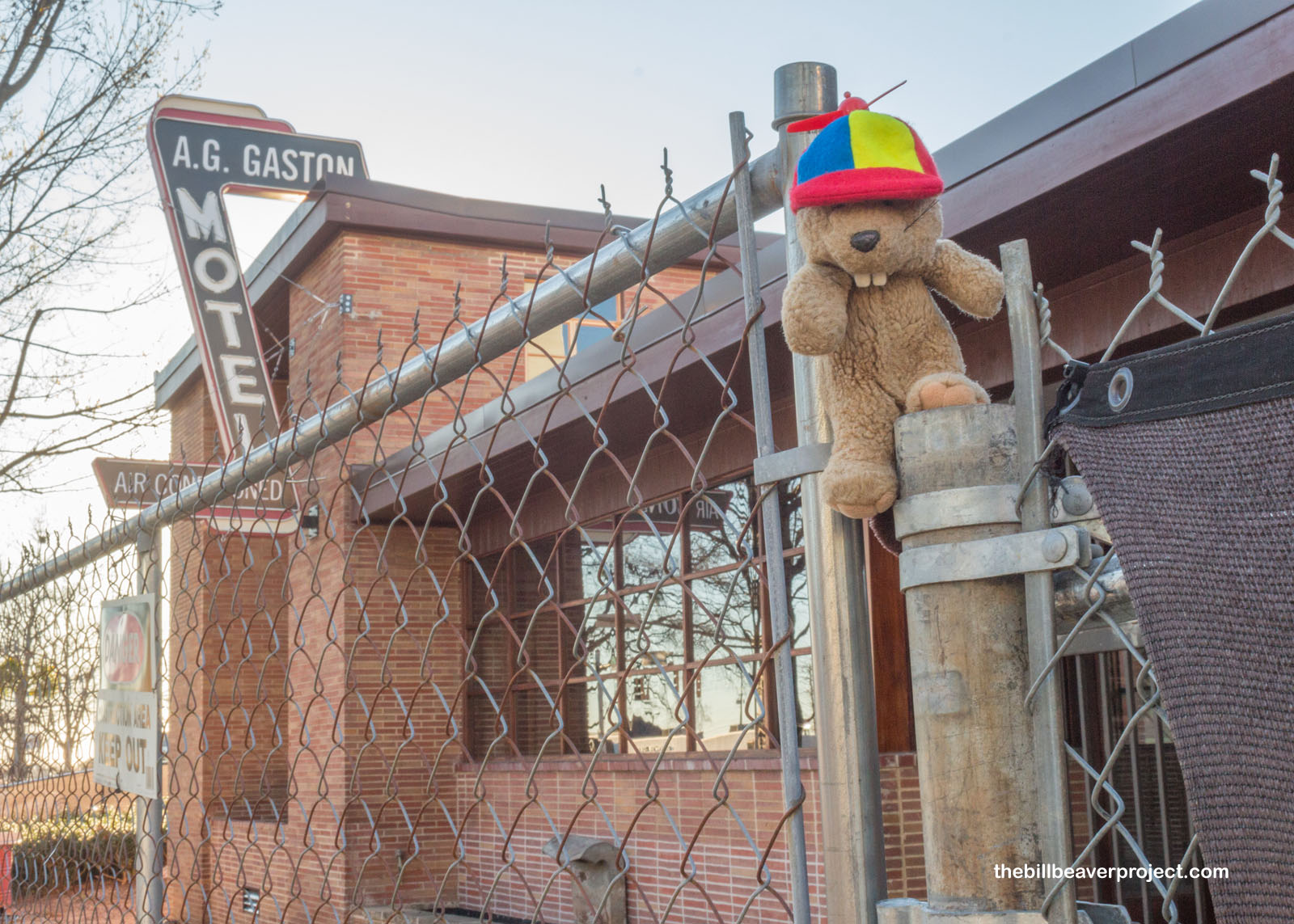 |
As my last few hours in Birmingham drew to a close, I took one last look at the core of this brand new (2017) national monument, the A.G. Gaston Motel. Named for its founder, Arthur George Gaston, this motel was Green Book-approved since 1954 as a place where Black travelers could enjoy fine dining and lodging in segregated Alabama. Room 30 of this motel served as the headquarters for Project C during all the events mentioned above. It survived a bomb blast, and at the time I visited, it was being renovated as an interpretive center for the new national monument!
And so, having experienced this missing national monument and learned a bunch, I headed back up to Tennessee as the sun began to set. Today’s historic sites reminded me how so many parts of history are interconnected if we just know where to look. I’ll be on the lookout for more connections tomorrow as I journey through Music City and up into the Bluegrass State!
Tune in later!

 More 2022 Adventures |
Total Ground Covered: 490.0 mi (788.6 km) |
 Next Day |
